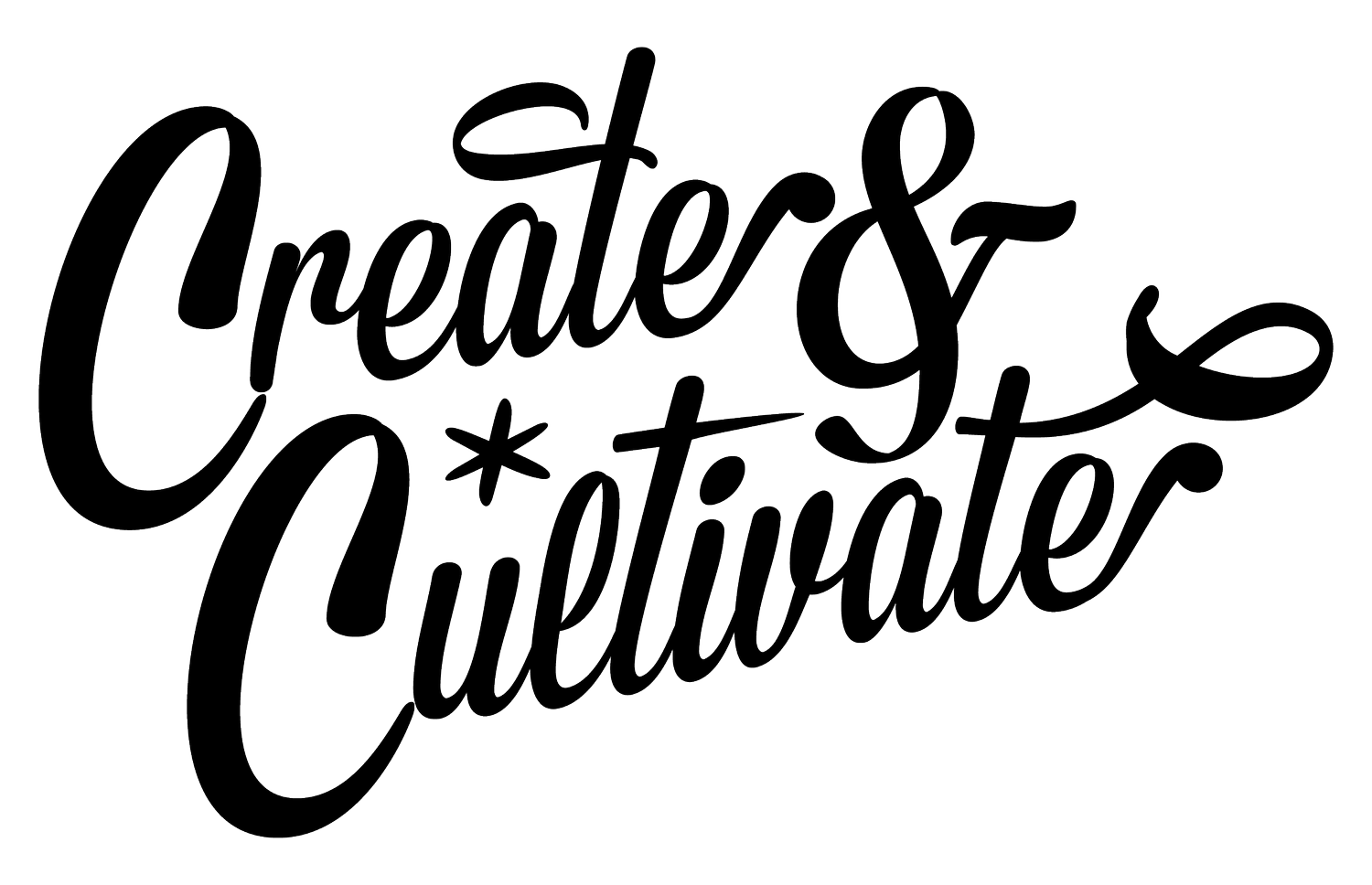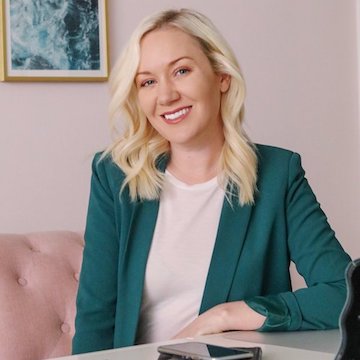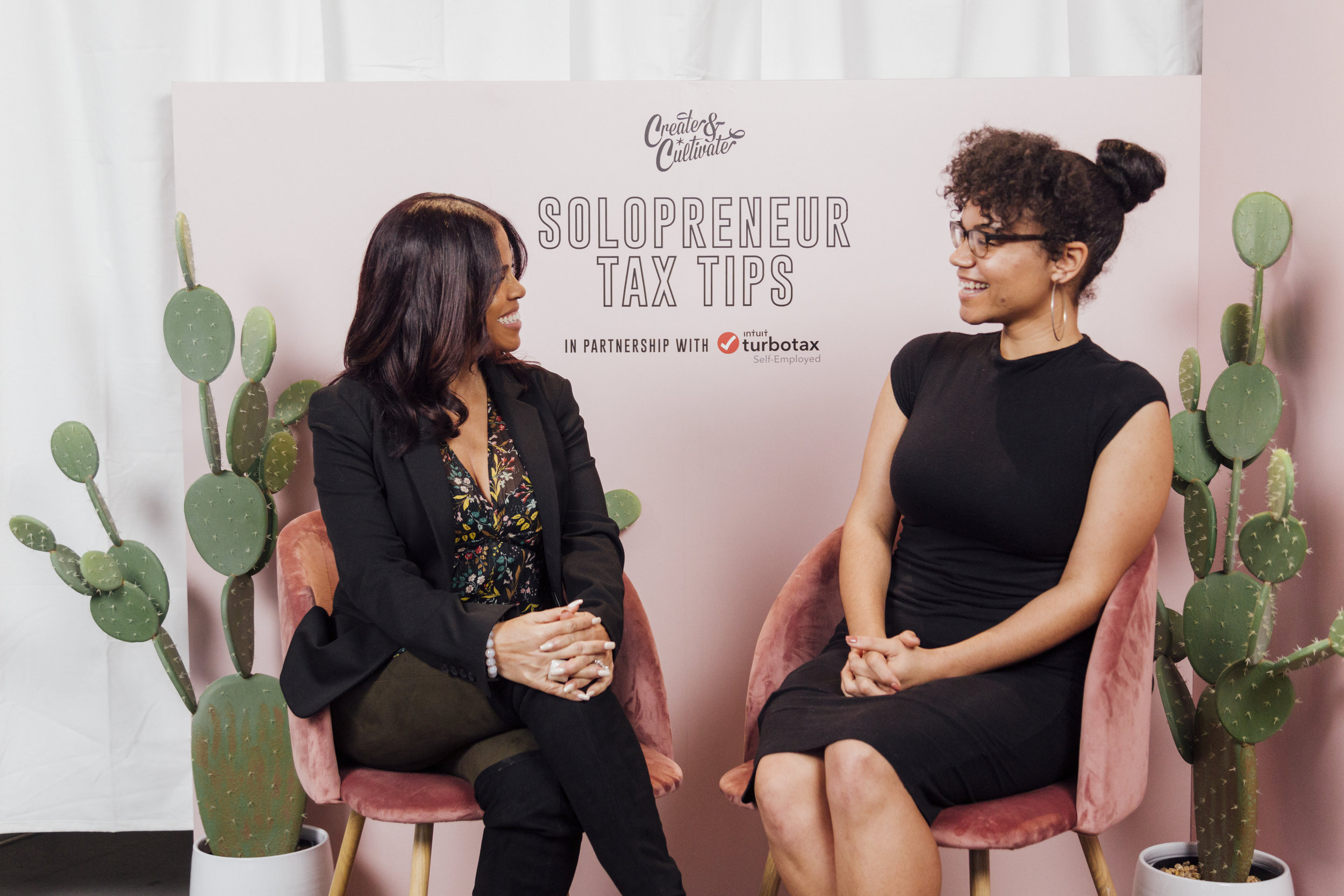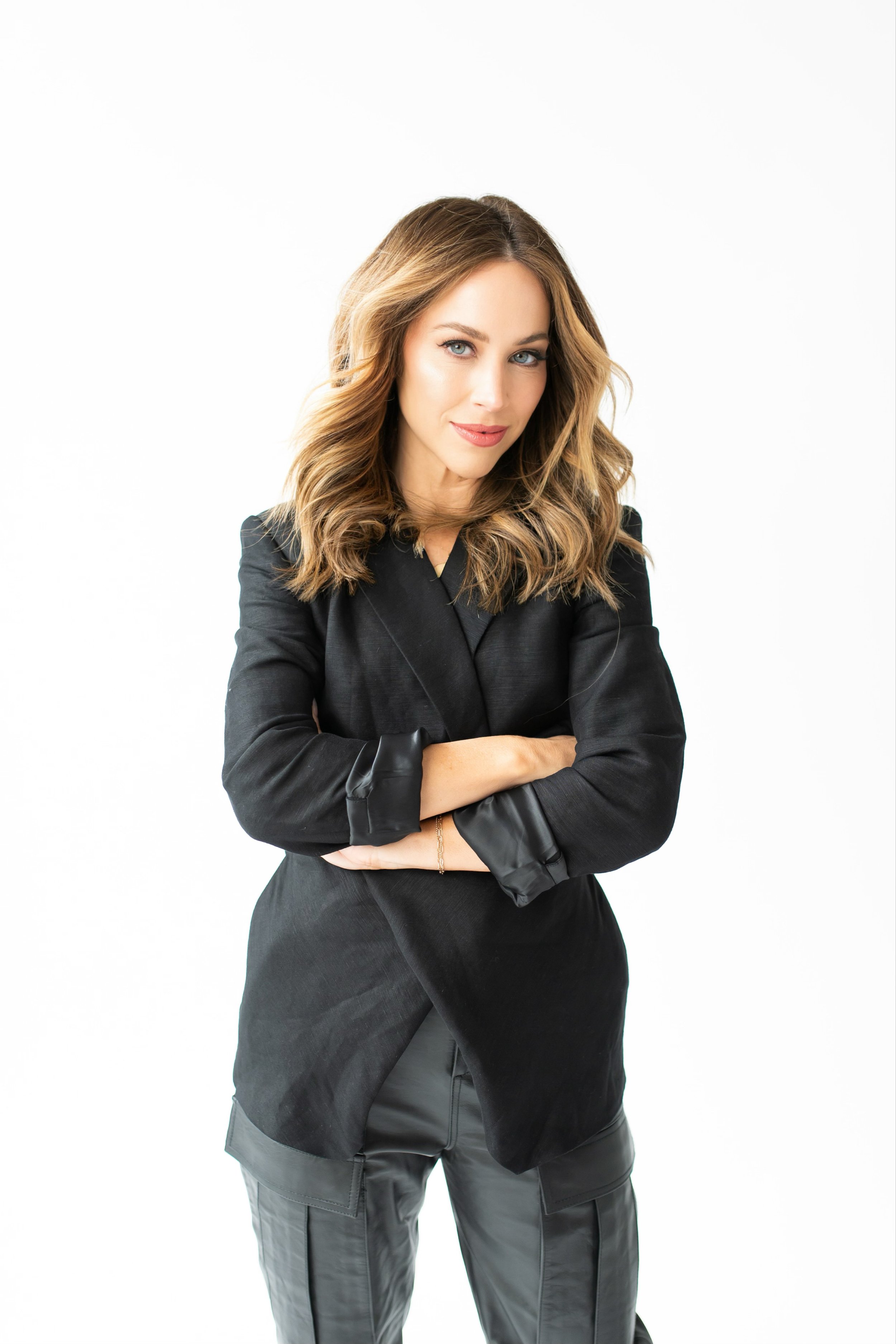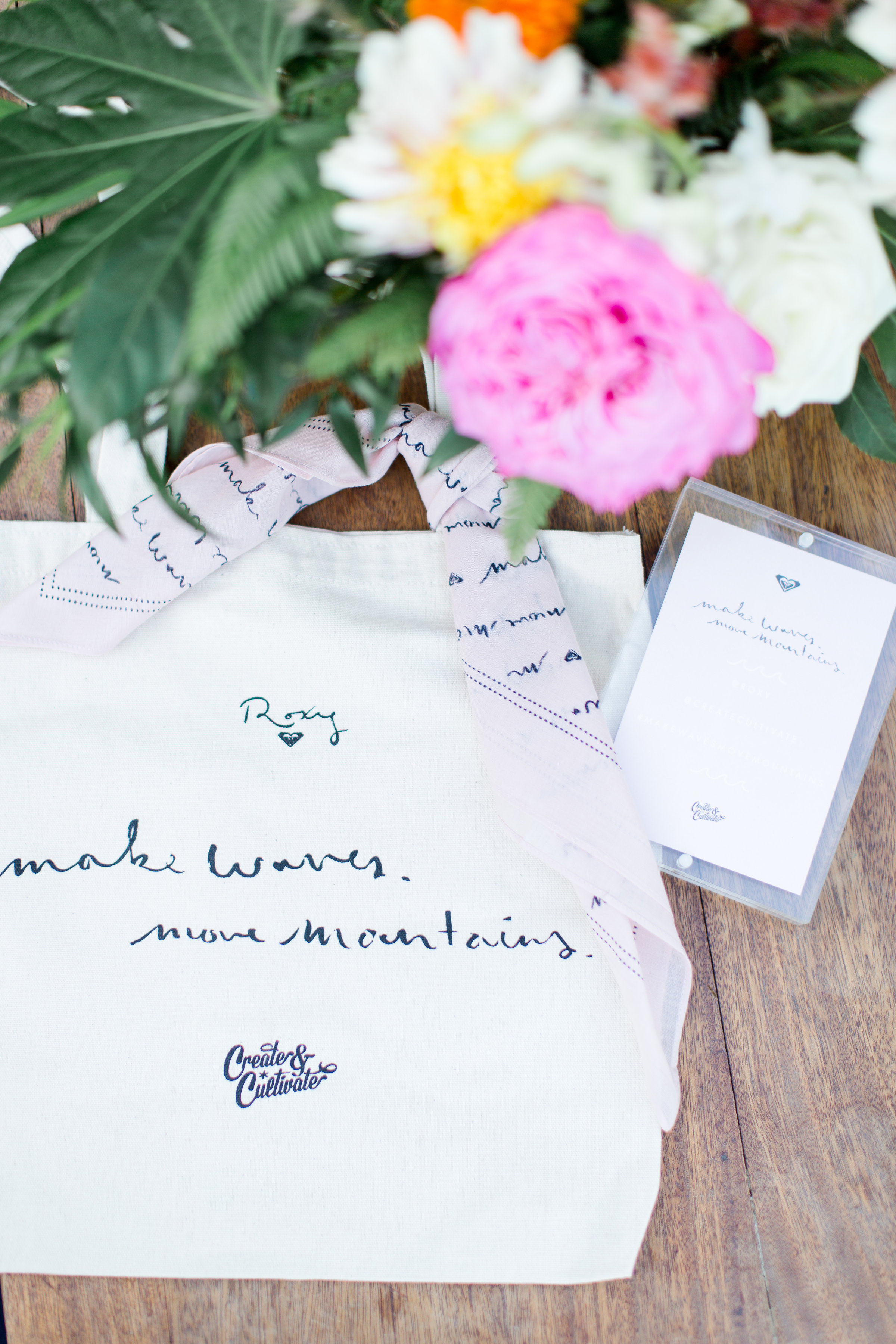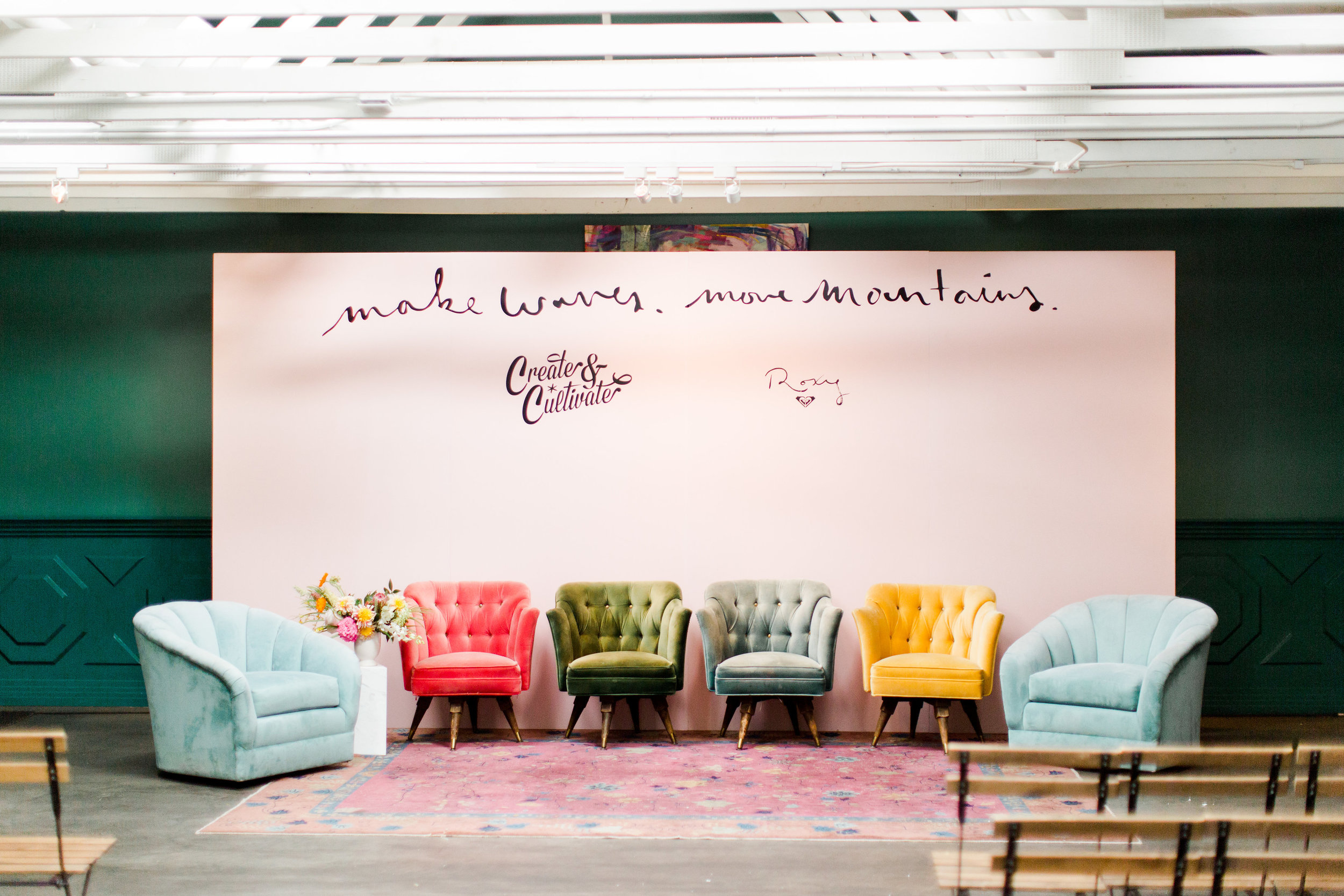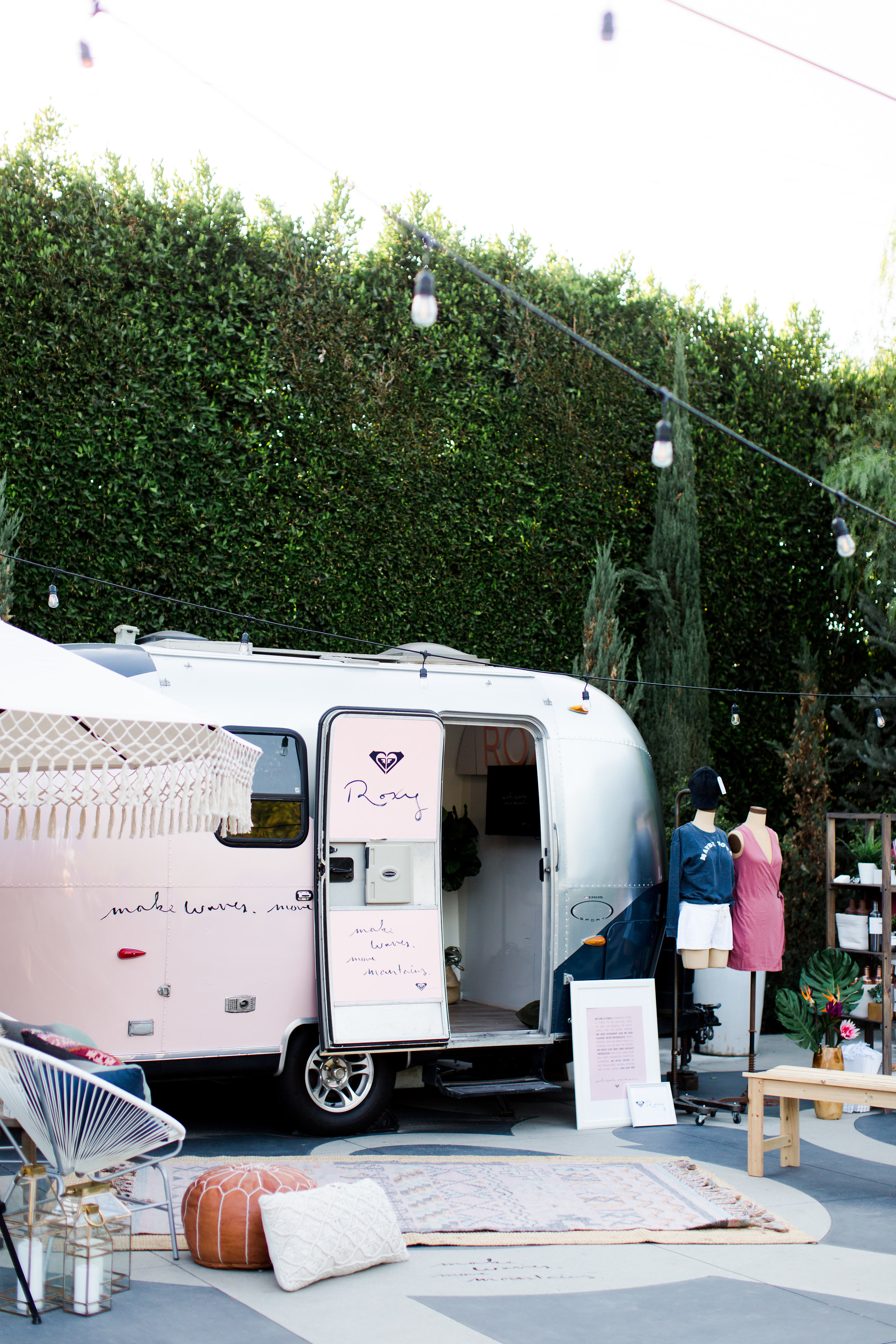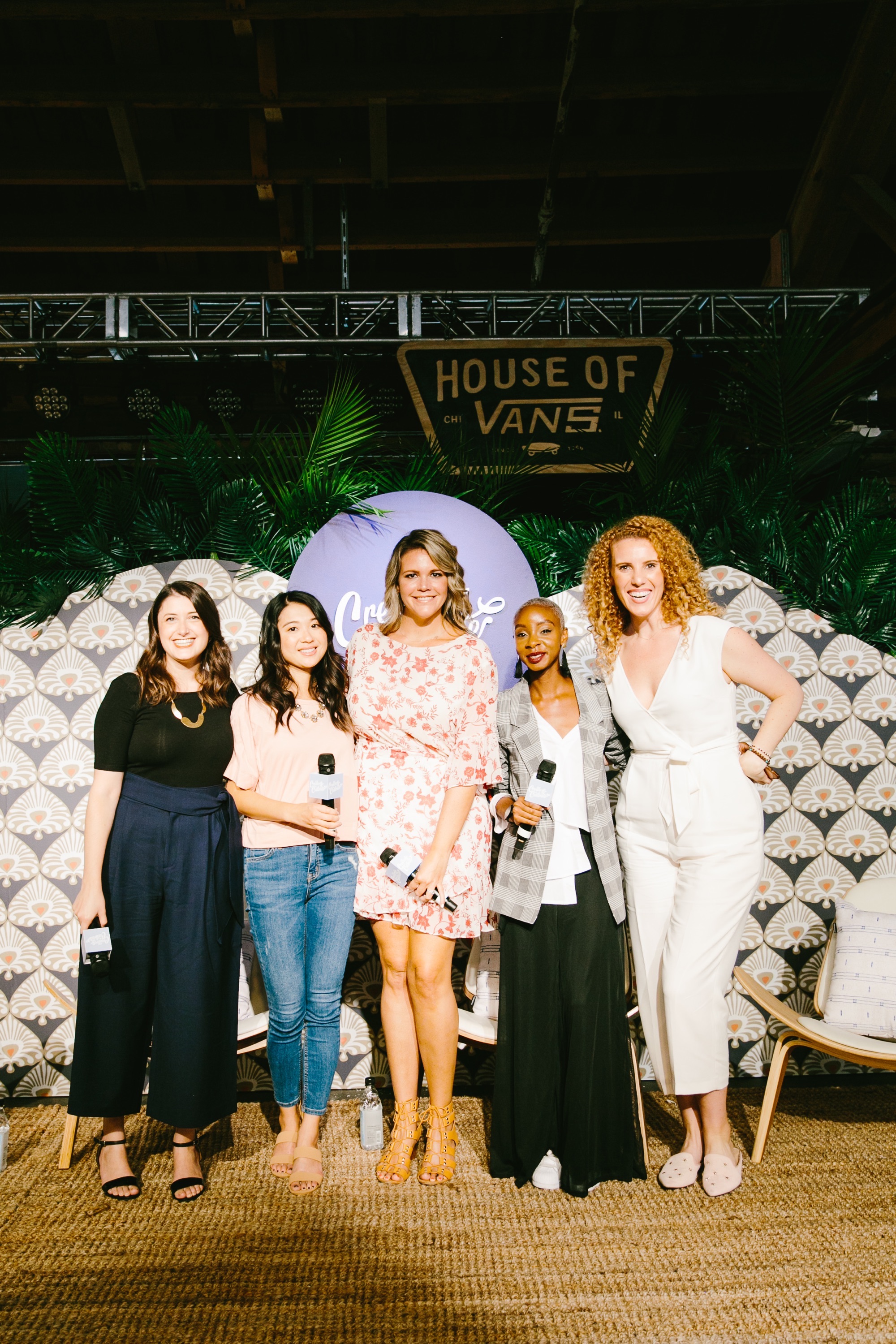Money Matters: Daina Trout, CEO of Health-Ade Kombucha
“There is no shame in wanting money. Money gives you freedom to live the life you want.”
You asked for more content around business finances, so we’re delivering! Welcome to the first installment of Money Matters, our newest series dedicated to giving you an inside look at the pocketbooks of some of your favorite CEOs and entrepreneurs. In this series, you’ll learn what successful women in business spend on offices spaces and employee salaries, how they knew it was time to hire someone to manage their finances, and their best advice for talking about money.
Our first Money Matters guest is Daina Trout, CEO and co-founder of Health-Ade Kombucha. Daina is a huge advocate for being forward when talking numbers, so she’s an ideal woman to kick off the series. Below, she shares her financial story.
Where do you think is the most important area for a business owner to focus their financial energy?
First, you want to focus on growth; second, on profitability. On growth: It is very tough to get your company off the ground and to a place of increasing revenues from scratch, and it’s going to take every piece of your being to get it there (so you can’t be distracted by much else). Also, my experience has been that momentum is a real thing. The faster your company grows today, the faster it will grow tomorrow (at least in the beginning). It’s all hands on deck, full pedal-to-the-metal speed.
On profitability: You don’t want to wait too long for this, else you will be constantly raising money and diluting yourself, feeling like you’re in a never-ending rat race. But at the same time, nobody cares about a profitable business that isn’t growing, so you don’t want this to be your first #1 priority (unless you have one of those rare businesses that can do both from the start). You want to be an owner of a company that is growing and tightening at the same time. It’s important to strive for that balance.
“You want to be an owner of a company that is growing and tightening at the same time. It’s important to strive for that balance.”
What was your first big expense as a business owner?
Two things: People and manufacturing equipment. People do the work so you have to invest here to have a good business. I often wonder, though, if co-packing is better than manufacturing in-house. The capital intensity of owning your own manufacturing is seriously something to consider.
How did you decide what to pay yourself?
I talk about this all the time to fellow founders—it’s a major issue. And I think most are underpaying themselves. In the very beginning, this is hard, because you don’t usually have investment or profits, so you’re last on the list (we paid ourselves a meer $300 a month in the beginning, which covered basically nothing). Once you get investment or profits, though, it’s important to re-look at your compensation and your role. Think about what it would cost for the business to hire for this role in the marketplace. An experienced CEO in LA makes $250K+ on average. This probably doesn’t make sense for a business that has just received its first round of funding, and you hopefully have a ton of upside in equity, so you want to consider that. Also, you probably aren’t as experienced yet, so your salary would be below average. That said, I don’t think $30K makes sense either. Be careful not to be a sacrificial lamb for your company here. A sensible pay that considers your job requirements, your value, and your equity situation should be budgeted for the business. Each year, you should re-calibrate until you get to the average or your goal at a reasonable time.
“Be careful not to be a sacrificial lamb for your company. A sensible salary that considers your job requirements, your value, and your equity situation should be budgeted for the business.”
How did you decide what to pay employees?
In the beginning, you’re always looking for the “unicorns”: the people out there without the experience, but with ALL the talent and drive to be great. This can work in the beginning—it’s certainly cheaper to do it like this. The problem is, you’re constantly going to need more out of them, and they are going to constantly have to rise with the tide in fast growth. You will likely find in one year that it just doesn't work anymore. Rarely, our “unicorns” have made it all the way in seven years, but I can only think of a few who have. Just think about that when you hire these so-called unicorns: it’s likely a short-term cheap gain for a longer term termination and re-hire. At the end of the day, my opinion is you will get the best value from hiring a person that could easily do the job one to two years from now. But you have to pay those people what they’re worth, AKA market value. The one thing you do have is equity, and you can reduce someone’s salary in exchange for that. But at this point, everyone in my company makes market pay or higher, regardless of their equity status. The equity-exchange-for-lower-salary thing only kind of works in the beginning.
What are your top three largest expenses every month?
#1 People. #2. People. #3 Raw ingredients. Did I mention people?
How much do you spend on office space?
Strictly office space is about $10K for every 30 people. But also consider the cost of building out the space. You might be surprised to know that cubicles are $1000K+ per desk, and design is not cheap. Of course, your number could go up or down if you’re super scrappy or need something fancy, but this is the average spend.
How much do you spend on employee salaries?
Salaries right now are about 60% of our total expenses. We do a lot of things in-house, though, so this number could swing 30% down (total expenses here would likely go up) if we choose to outsource more.
How much are you saving? When did you start being able to save some of your income?
We will hit profitability this year, in our seventh year in business. For the beverage industry, it’s pretty typical to take five to 10 years before hitting profits. It will often be on the longer side if you manufacture. This is something to consider—in this industry, you will need cash solutions for five to 10 years to keep your business running.
What apps or software are you using for finances? How did you decide when to hire a financial advisor (if you have one)?
We started with just QuickBooks and Square, but now we use a ton of additional tools to help us, especially for manufacturing, such as Domo and Fishbowl.
“Money to a business is like air to humans. It’s not the reason
you exist, but you literally can’t live without it.
There is no shame in wanting money.”
Do you wish you’d done anything differently in your financial journey as a business owner?
The ONE ABSOLUTE THING I would do differently is hire out financial support earlier than I did. Now that I have my CFO, I literally wouldn’t start another business without him (or someone like him). He’s been critical in helping me build a strong business.
Why should women talk about money?
Women should talk about money all the time and every day. Money to a business is like air to humans. It’s not the reason you exist, but you literally can’t live without it. There is no shame in wanting money. Money gives you freedom to live the life you want. You can make more of an impact on the world. You deserve to live the life you want, right? If you agree, it’s time to start figuring out how you get the money to live the life you want. The same goes for your business, by the way: figure out how much money it needs to make in order to hit its goals. Once you define the life you want, and the money you need, you have a defined gap to work on: the now versus the desired. It’s a heck of a lot easier to get to your desired state if you know how far you have to go.
MORE ON THE BLOG
Solopreneur Tax Tips: The C Corp Entrepreneur
“Clarity often comes from doing, so I always push my clients to DO very quickly.”
Filing taxes when you’re an employee is hard enough. But what happens when you strike out on your own? There’s a big difference between business structures—whether you’re operating as a sole proprietorship, LLC, or S corp, there are different planning and filing processes for each. Today, we’re diving into how to handle taxes when you’ve chosen one of the lesser-known structures: a C corporation.
Above, entrepreneur Natalie Elizabeth Ellis, founder of BossBabe—sits down with Lisa Greene-Lewis, TurboTax CPA, to learn how TurboTax Self-Employed can help her stay on top of her C-corp tax obligations throughout the year. Read on to learn a little more about Natalie and see how TurboTax can help you prepare and file taxes confidently. Plus, we're gifting 30 readers with a FREE TurboTax Live Self-Employed product code (valued at $169.99) below—so you can file for free this season!
Tell us a little about your company, BossBabe.
BossBabe is one of the largest and fastest growing online communities of ambitious women in the world. Our mission is to connect, inspire and teach ambitious women how to create their own versions of success. We aim to help 1 million women create $1billion in revenue.
What’s been your biggest challenge in getting BossBabe off the ground? What’s been your proudest moment?
I feel like my proudest moments come in waves every day - whether that's seeing that we've been able to help a woman generate over $500,000, or quit their full-time job to work on their business, or even crack 10K followers on Instagram. I see all those wins as big wins and the real "why" behind what we do. It's also been incredible to be featured in Forbes, Entrepreneur and Business Insider alongside other incredible entrepreneurs who are driven by big missions.
I'd say my biggest challenge with BossBabe was being able to respond to how quickly we scaled. From finding team, to setting up the right systems, it was such a struggle to do it as quickly as we needed to.
Our C&C readers agree—scaling up can be scary! Thankfully for Natalie and the rest of our community, TurboTax Self-Employed comes with a free year of of QuickBooks, so you can spend less time on the logistics of tracking expenses and more time focusing on the growth of your booming business.
What advice would you give to would-be side hustlers who don’t know where to start in getting their business off the ground?
Stop thinking, start doing. Make sure that you're setting aside time every single day to DO something and are actively moving the needle towards where you want to go. Too often we can be paralyzed by decisions, fear and unknown. I believe that clarity often comes from doing and learning, so I always push my clients to DO very quickly.
What are you most excited about for your business in 2019?
In 2019, I'm so excited for all of the new products we're launching. We'll soon have a podcast and we're also creating a product to help other entrepreneurs grow their community online in the way we did (we have over 1M women in our community!). I'm also just really excited to continue supporting the women inside our membership and mastermind products grow their own businesses so that they can inspire and support people in THEIR audiences. We really value the idea of being multiplyers.
Want more tips for tax time? Check out our guides for side hustlers and freelancers! or Or you can dive into TurboTax Self-Employed here—and enter to win a free TurboTax Live Self-Employed code below!
Our friends at TurboTax were nice enough to share a giveaway with Create & Cultivate readers so you can file your taxes for FREE this season!
30 readers will receive a FREE TurboTax Live Self-Employed product code (valued at $169.99). Simply fill out the form below to enter to win. The winner will be chosen randomly and contacted via email. Good luck!
This post is sponsored by TurboTax.
Pro Tip: Five Things To Include In Every Scope Of Work
Yes, office hours exist for freelancers.
Today’s Pro Tip is for all of the freelancers out there! You’ve just secured your first client and have been asked to provide a scope of work…but what is that, exactly?
A scope of work (also referred to as an SOW) is a document outlining details for the deliverables you’ll oversee, the time you’ll spend and the steps you’ll take working on these deliverables, and how you will be compensated. Beyond these basic areas, there are a few additional things you'll want to cover off in your scope of work to help proactively manage client expectations and create accountability for yourself.
Here are five things to include in your scope of work (and if you're not entirely sure what an SOW looks like, I’ve got you covered! Download my free resource, The Freelancer Starter Kit, here).
Office Hours
Yes, office hours exist for freelancers! If your client is in the same time zone as you, this may not be too big of an issue but it's still important to share if you have a timeframe you work within each day. This is especially the case if you have daily obligations like doctor's appointments, a side hustle or kids to pick up from school.
While we all will have to work outside of our desired times here and there, it's beneficial to express when you will be available for emails and phone calls with your client up front. If you work with clients in a different time zone, let them know when you will be available during their daily working hours and beyond in your scope of work.
Days Off
To echo the office hours section - yes, freelancers take days off! If you have a family vacation, previous commitments or just need some personal time, include those dates in your SOW. So long it doesn't conflict with any of your deadlines or obligations promised to your client, this shouldn't be a problem, but it's always better to communicate upfront.
Billing Expectations
It is so important to put any billing expectations you have into the scope of work and even more important, to have an actual conversation with your client on these expectations either in person or over the phone. Talking about money is an uncomfortable topic for some people but believe me, you want to be crystal clear when it comes to your finances as a freelancer.
If you expect to be paid every 30 days because it's what you and your client agreed to, put it in the scope of work and ask your client what you need to do proactively to make sure that happens. Once the SOW is signed, I usually follow up asking if there's anyone in accounts payable I should connect with to get setup as a new vendor. That way when I submit my invoice at the end of the month, everything is already in place and my money hits the bank a lot faster.
Number of Revisions
This doesn't necessarily apply for every type of freelancer but if you work in any form of creative field (graphic design, copywriting, video production, etc.), you will want to include instructions for the number of revisions you're willing to provide. This will help prevent you from spending extra hours going back and forth on minor requests and instead encourage your client to be very clear and detailed with their expectations and needed edits the first time around.
Extra Work
This is by far the most important line to include in every scope of work... *clears throat*
“Any work requested by the client outside of this agreed upon scope of work before, during or after the project dates will be billed at an additional hourly rate of $(your hourly rate).”
Why is this so important to include? Because you will undoubtedly be asked to do something outside of the original scope of work. Your time is valuable and if you are on retainer or working on a project fee, you need to be compensated for the extra effort.
Freelance isn't free. Remember that.
About the author: Audrey Adair is a seasoned freelance communications professional and founder of ‘The Scope’ — a platform providing resources and community to freelancers and the self-employed. Connect with The Scope on Instagram and join their email list to receive your free resource, The Freelancer Starter Kit.
MORE ON THE BLOG
Solopreneur Tax Tips: The Side Hustler
Learn what it takes to file taxes when you’ve got a full-time job and a side hustle.
The side hustle economy is real—37 percent of the workforce has a side hustle (and more than half of the Create & Cultivate staff has one!).
Having a side gig is exciting—you’re about to make more money, after all! But what you might not be prepared for is tax time. Above, our very own C&C employee Tyeal Howell—who moonlights as a podcast host at Bosshood—sits down with Lisa Greene-Lewis, TurboTax CPA, to learn how TurboTax Self-Employed can help side hustlers run their business more efficiently in preparation for April 15. Read on to learn a little more about Tyeal and see how you, too, can use TurboTax to file with confidence. Plus, we're gifting 30 readers with a FREE TurboTax Live Self-Employed product code (valued at $169.99) below—so you can file for free this season!
Tell us a little about your podcast, Bosshood. What inspired you to start the pod?
My best friend Ryan and I launched our podcast Bosshood to give young professionals and aspiring entrepreneurs access to people, resources, and information on accomplishing their career goals and working their way into the positions they aspire to be in. When we were graduating from college back in Ohio, we didn’t have the connections or resources we really needed to launch our careers in New York City and Los Angeles, so we created them ourselves and finessed the glow up. Bosshood is a fresh spin on adulting for millennials who obsess over professional development books, love coffee, and hangout at rooftop parties in cool cities.
What’s your biggest challenge in having a side hustle? The biggest reward?
The biggest challenge is definitely time management. After spending Monday through Friday 9-6 looking at my phone and my computer while sitting at my desk for my day job, the very last thing I want to do is more work. The biggest reward comes after that extra work is done for Bosshood and people text and DM us about how inspiring and encouraging it was for them to hear our stories. It’s even cooler when we travel and people come up to us like, “I loved your podcast interview with Johnathan Jackson on Bosshood! I was inspired and encouraged."
Tyeal’s not alone—we’ve heard from our C&C community that time management is a common problem for many side hustlers. The great thing about TurboTax Self-Employed is that it uncovers industry-specific deductions personalized to your line of work, so come tax time you won’t be racking your brain to think them up yourself. Your purchase also comes with a free year of of QuickBooks, which makes expense tracking effortless—so you have more time to focus on actually building and growing your business.
What advice would you give to would-be side hustlers who don’t know where to start in getting their business off the ground while working at a 9-to-5?
I’d say dedicate one of your weekend days where you’re completely free of work obligations to just brainstorm. Sit at a cafe, write out all of your ideas, and just envision what you want those side hustle dreams to manifest into. Then find someone to hold you accountable for the next steps. Start by starting! And read WorkParty the book!
What are you most excited about for your business in 2019?
I’m most excited to continue learning new things, failing at things, adjusting my strategies, and producing the content. Season 2 of Bosshood will be coming soon and you can subscribe now on iTunes or listen on Soundcloud! Boss up!
Want more tips for tax time? Check out our guides for full-time freelancers and C corp entrepreneurs! or Or you can dive into TurboTax Self-Employed here—and enter to win a free TurboTax Live Self-Employed code below!
Our friends at TurboTax were nice enough to share a giveaway with Create & Cultivate readers so you can file your taxes for FREE this season!
30 readers will receive a FREE TurboTax Live Self-Employed product code (valued at $169.99). Simply fill out the form below to enter to win. The winner will be chosen randomly and contacted via email. Good luck!
This post is sponsored by TurboTax.
This Skincare Line Founder Shares How She Stays Innovative After 35 Years In The Business
“We do not rest on yesterday’s successes.”
Skincare is having a moment. The industry that’s poised to reach $177 billion by 2024 is growing exponentially and shows no signs of slowing down. But in a world where we’re inundated with product after product on social media, we wondered: How is it possible to stand out among millions of other products that promise to tone, tighten, and brighten better than the next? We sat down with Sandie Tillotson, who cofounded skincare company Nu Skin more than three decades ago, to find out.
How did you originally envision your career? Did you always want to work in beauty?
As a young girl, I wanted to be a teacher. I went on to receive a degree in physical science and a teaching certificate from Brigham Young University. I was married with two small children and had been substitute teaching elementary school classes when I was approached by my mother-in-law. She had used a product she loved that helped her lose a lot of weight and asked me to help her sell it through a direct sales channel. It was at this time that I discovered my entrepreneurial spirit, and I experienced tremendous success as a distributor for that company. Unfortunately, the company later filed for bankruptcy, and I was suddenly unemployed.
But I knew the power of direct selling and believed that skin care was a perfect fit for direct sales. At the time, skin care products on the market were loaded with mineral oils and other harmful ingredients and fillers, and our little group of founders set out to create a new line of products with all of the good ingredients and none of the bad. We created a list of innovative ingredients and hired a formulation expert to create products using only beneficial ingredients. Many told us that it would be too expensive and that we would not be successful, but people loved our products, and we’re still going strong nearly 35 years later.
What was the moment you learned the beauty industry was the right fit for you?
I knew we had something special the day we ran out of product bottles. In the early days, our product came from the manufacturer in bulk, and we packaged it ourselves. It was so effective, it became difficult to keep up with the demand. While we waited for our next bottle order to arrive, our customers started bringing their own containers so they could get our fabulous products without delay. They brought whatever they had—baby food jars, plastic packages, whatever worked—and we carefully measured out product into those containers so we could meet their needs. We knew we were onto something exciting.
Your biography mentions that you’ve done a lot of philanthropic work. What have these efforts taught you as a business owner and leader?
I believe that not only are we the happiest in life, but we are also at our best, when we are “motivated by love.” Great things happen when we are focused on helping others rather than making money. Together, my business partners and I embraced this philosophy, and we infused it throughout the company we created. We wanted to help others be successful professionally so that they could use that success to help improve the lives of others around them. Helping others makes the work we do and the success we find that much more fun and rewarding.
One of the things we did early on was establish the Nu Skin Force for Good Foundation – with Nu Skin covering all the operating costs of the Foundation. This was important to us because when someone donates, they know that 100 percent of their donation is going to help improve the lives of children around the world.
What are some key characteristics in your opinion that make female business owners successful?
I believe we each have our own talents and gifts that we bring to everything we do. It is up to us to discover what our strengths are, and then to use them to improve our lives and the lives of those around us. When I became a mother, I learned how important it was to nurture and care for others. I found that for me, loving others and giving of myself without expecting return – in my home and in my professional interactions – was the best way I could care for others. At the same time, we need to know when to separate emotions from business decisions. Do not take things that happen in business personally, but learn how to separate and handle them without letting it affect you emotionally.
What’s the key to maintaining relevance and encouraging growth after so many years in business?
At Nu Skin, creation and innovation are central to everything we do. We do not rest on yesterday’s successes, but instead look to the future and what we can offer next. In fact, in our last earnings release, we reported our fourth consecutive quarter with revenue growth of 20 percent or more. How many 35-year-old, multi-billion dollar companies can say that? This is a tribute to the great team of people we have – both our employees and teams – who are connected by a common cause of being a force for good in the world and together have created a great environment for both company and individual growth and development.
What makes Nu Skin stand out from its competitors in a crowded space?
While we have developed products that are proven to work and that people love, our real differentiator is our culture of empowering people to improve lives. Over the past 35 years we have built a worldwide sales force who are successfully sharing our products and opportunity through social media. This “force for good” philosophy, coupled with our dedication to helping people to discover their best selves, are what make us unique.
Just yesterday, I received a video message from a woman who through tears shared how grateful she was that she wouldn’t have to work this Christmas and could enjoy the time with her family. Nu Skin not only allows her to set her own schedule, but through her Nu Skin business she has been able to purchase food and gifts to share with others this Christmas. She was thanking me, but I reminded her that she was the one who did this for herself and her family through her sharing and caring for others.
With an emphasis on all things digital, how has the company structure changed in recent years?
The digital age has made it possible for people to get the word out about our products faster, easier and to more people than ever before. Technology helps our sales leaders be more efficient and successful but doesn’t take the place of a personal connection. People use our products and join our global family because of personal relationships and recommendations based on trust. And at the end of the day, every person wants to know that you care for and are there for them.
Where do you see the beauty industry heading in the future?
As is the case with almost any industry right now, the beauty industry is changing rapidly. Right now, we are seeing a huge demand for in-home beauty devices that deliver spa-like results. Technology is enabling people to understand their unique skin care needs and discover more personalized regimens. Innovation is always on our minds, and we are constantly improving our products and looking for additional products our customers want and need. As science discovers new ingredients and technology offers us new products to share, we will embrace those innovations and develop new strategies to share with our Nu Skin family.
You’re known for creating a unique global marketing plan. Any tips or insights you can share with our readers who are looking for ways to market their businesses internationally?
Even as we were just starting our business, we had the hope of expanding globally—we even named our new business Nu Skin International to reflect that thinking. The first market we expanded to was Canada, and even with the proximity and similarities to the United States, we needed to work with a different currency and label our products in two languages. Fast forward to today and we have expanded to nearly 50 markets.
Our goal in each new market has been to establish a reputation as a solid corporate citizen and industry leader. We do this by working closely with local government officials and building trust with our sales leaders and customers by keeping our promises. It is this trust that allows us to grow and continue to be successful.
Along the way, we have made mistakes and learned valuable lessons. One of the most important questions we would always ask ourselves, and still do, before expanding into any market is whether we have the cash and other resources necessary to properly support the market. If we don’t, we don’t open the market until we are ready.
How do you stay current and up-to-date on the latest trends in the business world?
I’m both a businesswoman and a person who loves to learn. As I’m traveling the world, I constantly look at countries, cultures and customers through the lens of a business owner. Everywhere I go, I search for trends and product ideas that will delight and improve the lives of our customers. I also get invaluable advice from my children, grandchildren and our global family of leaders who keep me in touch with current health, beauty and social media trends. What would we do without our amazing millennials?
It’s Monday morning and your schedule for the day is packed. What are the first things you do to prepare for the day?
My day always begins with a Facial Spa treatment to wake up my skin. It feels incredible! I follow that with a shower where I use my LumiSpa, Liquid Body Bar and, depending on time, some of our other great Nu Skin shower products. After breakfast I take my LifePak and other daily Pharmanex supplements I love. The other day, I counted the number of Nu Skin products I use before I walk out the door every day and got to 40. I guess you could say that I’m a “product of the product!”
What is one skincare product you can’t live without?
When the airlines lost my luggage for three days, I missed everything! But I learned that my health and beauty “must haves,” were Pharmanex LifePak vitamin supplements, Nu Skin 180 Face Wash and our ageLOC Tru Face Essence Ultra moisturizer. Lucky for me, I was attending a Nu Skin event and plenty of people were there who were motivated by love to share their supply with me!
What’s your go-to song to sing in the shower?
I’m not much of a shower singer, but anyone who knows me will tell you I absolutely love music. I listen to and enjoy all genres of great music and have an extensive collection of playlists. One of my favorites is a playlist I’ve been compiling of songs that empower women. When I listen to these songs, I’m inspired to believe in myself and do my very best in everything I do. Here’s the link.
Enjoy, and feel the power you have to change your life and change the world!
MORE ON THE BLOG
5 Things You Should Never Delegate
Sometimes DIY is best.
Small business owners, do you have a hard time giving up control? We understand the fear. If you do it wrong, it can lead to expensive mistakes, damaged brands, and poorly-managed teams...but do it right, and there are tons of benefits to gain: You’ll free up your calendar and have more energy to focus on high-level, big-picture tasks. You’ll also quickly achieve goals, while allowing your small business to scale.
That said, there are some tasks that should never be taken off your plate. As a small business owner, you should be laser-focused on creating the best business plan, workplace, and community that you can. Here are five things you should never delegate:
1. Call the shots for every major business decision
It’s your company. Never assign high-level moves or major business decisions (significant changes to the business, investments, partnerships, etc.) to anyone but yourself. Even when you hire a strategist or consultant, you’re still the person who should have the final say. It’s your business—own it.
2. Don’t delegate anything you don’t understand
You can’t effectively manage what you don’t comprehend. One area where business owners often fail is understanding finances. Many think it’s time-consuming and tedious and therefore want to hire it out right away—but how can you make important decisions for the future without knowing how and why to allocate resources? How can you make informed business moves without comprehending the state of your finances? Understand your finances and the scope and extent of each of their roles, then consider hiring an accountant, bookkeeper, controller or other support.
3. Do all of the hiring and firing yourself
The strength of any small business lies in the strength of its team. When you do all of the hiring on your own, you’ll be sure prospects fit with your vision. After hiring, build relationships with all key personnel and take charge of motivation, inspiration, and employee morale. Make sure employees feel like important contributors to your team.
It’s equally vital to handle firing. Of course, a manager can fire an employees on your behalf, but it’s your job to share the value of their contributions and to make sure their exit is a fair and professional one. Your business’ reputation lies in your hands.
4. Create a strong company culture
It’s imperative that the boss personally cultivates and sets the tone for their company’s culture. If they don’t, it will organically come into being by way of the words and actions of their employees. Set a culture that encourages others to speak up, share ideas, and voice concerns; motivate others to “own” their areas of the business; and look for the right fit (in terms of personality and in values) in every new hire you bring aboard.
5. Personally welcome all new employees
No matter how great your managers may be, nothing can replace the feeling of being personally welcomed by the CEO on day one. Your employees will start on the right foot and have an easier time acclimating to your company’s culture when standards and expectations come straight from you.
When you’re a small business owner, it can be tempting to want to do it all alone. It’s crucial to spend time on these five vital strategies and tasks, but when it comes to the rest of your work, take a step back and think about how you can delegate to make it easier to focus on the big picture. What can you delegate this week?
Syama Meagher is CEO and chief retail strategist of Scaling Retail, a boutique retail consulting firm working with clients around the globe. The agency advises startup, growth stage and enterprise CEOs on everything from the art of negotiation and industry best practices to mental frameworks and capacity building for new hires. Discover what Scaling Retail can do for you at www.ScalingRetail.com.
MORE ON THE BLOG
5 Key Tips to Build a Great Website
Everything you need to know to build a better site.
5 Key Tips To Build A Great Website
Whether you’re a budding entrepreneur, graphic designer, or crafting queen, having an awe-worthy website is the best way to showcase who you are and what you do. If you’re like me, you’re quick to jump when a website isn’t eye-catching or user-friendly. The internet is a crowded space, and being able to differentiate yourself can feel nearly impossible. So what do you do when you want to launch your own website? Enter Weebly.
YOUR BRAND, YOUR CHOICE
With Weebly, you can choose from an unlimited number of colors and typography options right from the Dashboard to build your brand. Website design is about more than a logo or color palette, in order to build trust and legitimacy with your shoppers, it’s integral that you communicate a clear brand throughout your website. Don’t be one of those websites that people immediately abort. If you have no idea what branding you should use, Weebly’s ecommerce themes give you a built-in consistent look, getting you up and running in no time. And from there, you can easily customize your site with “drag and drop” elements, all to your heart’s content. It’s basically magic.
SHOW US THE WAY
Let’s talk about navigation. No one likes feeling lost or confused, which is why a clear navigation should tell visitors (ahem, and Google) what your site is all about. An intuitive site structure should make it easy for visitors to explore your content—plus, it helps Google determine what's important on your site. And ultimately, Google can bring more visitors to your website. See the beautiful cycle?
From the Weebly Dashboard, use the "Pages" tab in the Site Editor to design the navigation. Easily click and drag your created pages underneath each other or add new pages as you see fit. Weebly's navigation menus adjust automatically to reflect the order you create. Before you get started, remember that navigation should also be consistent throughout the site. And be sure that you aren't providing dead-ends within your site that leave visitors unclear on where to go next or how to get back to where they were.
BUILD WITH INTENTION
We’ve all heard the saying, “less is more.” This applies to websites, too. One great Weebly tool for creating deliberate design elements is the Color Block app. Color Block helps you highlight and make specific messaging, such as a call to action that pops using just the right color. Having a sale? Make it stand out. Launching a new product? Be heard. Weebly can help.
PRETTY PICTURES, PLEASE
Answer this: What catches your eye more — black text on a white background or a photo? While minimalist style can be beautiful, websites need those eye-catching elements that draw the visitor in. And that’s exactly why photos are crucial. Weebly research shows that more than 75% of online shoppers say that product photos are “very important” when shopping online, meaning a bad photo (or no photo at all) could cost you. Have a product you can’t photograph yourself? Sign up for Weebly Photo Studio, or what I like to call Ship-Shoot-Send. Simply ship Weeby your products, have their expert photographers shoot the product photos, and then they’ll send your products back to you with those photos to download.
MARKETING 101 (NO DEGREE REQUIRED)
Pat yourself on the back—you just built an entire website using Weebly. What’s next? Flaunt your stuff, of course. Don't be afraid to show off your work to the world. Grow your audience with Weebly’s powerful marketing tools, which includes integrated email marketing with Weebly Promote, built-in SEO features, and much more.
All advice aside, remember: Your first website does not need to be perfect. Did you ride your bike perfectly the first time? Probably not. Good things come to those who are methodical in their work—and when building a website, Weebly helps you create something that you’ll be proud of for years to come.
MORE FROM THE BLOG
5 Preventable Startup Culture Mistakes
Hustle hard, but don’t make these common mistakes.
Every founder knows that culture is crucial to a startup’s success — as Fred Wilson says, “If you want to be in business forever, you need to build a culture that sustains the business” — but there are a few common mistakes that startups make when creating their culture:
1. YOU THINK CULTURE JUST "HAPPENS."
Running a startup means your burn rate is always in the forefront of your mind, and as a result, everything takes a backseat to getting to MVP. Culture can be fixed later, right? The truth is that “culture” is just another way of saying “how we work here,” and by the time you get to your MVP, it will be deeply entrenched.
FiveStars’s founder Victor Ho never took the time to officially define the culture— he felt it was too “cheesy.” But as they grew from 40 to 80 employees, their culture got diluted and as people clashed over ways of getting work done. As quoted in Fast Company, Ho described it as “one of the hardest periods of the company.” Rather than waiting to define your culture, consciously shape your culture while you build your MVP. You don’t have to go on an expensive company retreat, or write an elaborate culture deck. It can be as simple as writing down five words that describe your culture and once a month, as a team, discussing whether they’re still appropriate.
2. YOU THINK HIRING MORE PEOPLE MEANS SUCCESS.
Celebrating is so important because success at a startup can be so rare in the first months. It’s comforting to be able to point something that’s a clear sign it’s all working. And as Buffer’s founder noted, “Team size is easy to understand. Sometimes it impressed people when I told them how big the company was, and I was proud to share it.” But the company brought on too many people, too fast, and was forced to lay off 11% of the company. Protect team morale by tracking more accurate measures of success, and find ways to celebrate small wins regularly.
3. YOU SPEND TOO MUCH ON PERKS.
Bribing employees is a common Silicon Valley practice — what else are meals by gourmet chefs, meditation classes, and laundry service but attempts to get more work out of employees? And those bribes don’t come cheap: shrinking VC funds forced Dropbox to cancel its free shuttle and and limit free meals a few years ago.
If you really want your team to do their best work, regardless of your compensation budget, give them meaningful work. Show them how their work is directly impacting the organization, and how the organization is making a difference in the world. In other words, give them purpose. Oh, and don’t worry — “purpose” doesn’t necessarily have to be a product or service that saves the world (though that’s a plus); it just means that you have a compelling vision and mission.
4. YOU OVERWORK PEOPLE IN PURSUIT OF THE PRODUCT.
Signing up for a startup is a commitment; long hours and outrageous goals are part of the bargain. But push too hard, and you’ll flare out. At Zynga, for instance, long hours, “aggressive” deadlines, and an obsession with performance metrics led to a talent drain, and even hampered its ability to acquire companies. To prevent burnout, hold regular check-ins with your team to help them manage workload and stress levels. And don’t forget to check-in with the founder: 30% of founders report being depressed, as opposed to only 7% of the general population.
Again, we’re not saying you won’t spend some long nights and weekends at this office, but don’t make it a cultural norm.
5. YOU DON'T FIRE JERKS BECAUSE THEY'RE SMART.
Hiring the best talent is highly competitive, but ignore the “no asshole” rule at your own peril. Despite their superior skill set, their personality will destroy your team culture, not to mention their productivity. In one of our engagements, we worked with an executive whose attitude turned the rest of the team against him. This led him to protect his own job by guarding his data more and more closely, leaving the startup completely in the dark when making crucial decisions.
The best way to avoid this problem is to carefully screen for jerks during the interview process, listening for self-centered answers and trash talking past employers. (As Raylan Givens of Justified noted, “If you run into an asshole in the morning, you ran into an asshole. If you run into assholes all day, you’re the asshole.”) But if one has slipped past your radar, talk to them and make it clear how you expect their behavior to change. If they don’t shape up, then it’s time to go your separate ways — the rest of the team will thank you.
Written by Paula Cizek, Director of Knowledge & Editorial at NOBL. NOBL is an organizational and team design consultancy that unleashes the creativity and capability of teams through new ways of working.
MORE FROM THE BLOG
How Letting Go of the Hustle Helped Me Grow My Business
I've worn the “hustler” mentality like a badge of honor, but when I let it go, that’s when my business soared.
By Alysha Light, FLIGHT PR
Ask any entrepreneur if they consider themselves a hustler, and most of them will proudly say, “Heck yes!” The concept of the hustle is glorified in business and entrepreneurial communities, because we’re struck by the image of the self-sufficient go-getters who are putting themselves out there, making things happen and having no one but themselves to thank for the the leaps and bounds they've made along the way.
For a long time, I was damn proud of my ability to get sh*t done, to do more with less, to fire on all cylinders and go out into the wild in pursuit of big game because hey, fortune favors the bold and those bills aren’t gonna pay themselves, amiright? In a 2016 C&C piece, Dr. Lauren Hazzouri broke down why so many of us are addicted to the hustle: "We're human-beings, and humans tend to repeat anything that feels good," she wrote. "For women, especially, nailing the presentation and bringing home the bacon feels SO damn good."
And she's right. It does feel good to secure a big win. But how "good" is it really, when you're spending every waking moment on your phone or laptop and missing out on life in the name of the hustle and grind?
That's how I operated for the first few years after launching my business in 2013: no vacation, no team, #nodaysoff. Just me, grinding away 24/7 to prove that I can get things done for my clients, fast. That I was basically superwoman.
Unsurprisingly, I was burning out from the constant grind. I was bending over backwards and stretching myself so thin for small wins and inch-by-inch growth. I knew I needed to reprogram my mindset if I wanted to stay physically, mentally, and spiritually healthy.
Check yourself before you wreck yourself
Here’s the thing about the "hustle" mentality that no one tells you: Even though it champions hard work and self-reliance, it's ultimately rooted in fear. Your core belief is basically, If I'm not constantly chasing new opportunities and busting my ass, then I don't eat. I’ll let people down. My business will stall. You become terrified of the things you think you might lose if you dare to take the world off your shoulders for a moment.
Even though ‘the hustle’ champions hard work and self-reliance, it's ultimately rooted in fear.
Plot twist: When I stopped hustling, that's when my business grew the most. In no way have I lost my "go get 'em" attitude – but hear me when I say that my business tripled when I let go of the idea that things would stop if I stopped...chasing, pursuing, stressing, hustling, stretching, bending over backwards, etc. In fact, it was just the opposite.
There’s a spiritual principle behind this that basically shifts your mindset to one of stress and anxiety (or fear) to one of ease (abundance). What you’re basically doing, is signaling to the universe that you trust it to operate on behalf of your highest good, and that you believe things are always working out for you. Because they are. And when you really get this, you find yourself in “the flow”—that amazing space where things start flowing with minimal “effort” on your part.
Setting intentions > goals
One of my favorite people on Twitter, Maryam Hasnaa, believes in setting intentions rather than goals. Having adopted this for myself, rather than focusing on a list of things I want to accomplish, I’ve started asking a simple question: how do I want to feel?
One of my intentions this year was to feel ‘in demand’. If I'm in demand, that implies money is flowing and my inbox is flooding with new business opportunities. And guess what? That's exactly what’s happened.
As Rumi once said, “When I run after what I think I want, my days are a furnace of stress and anxiety; if I sit in my own place of patience, what I need flows to me, and without any pain. From this I understand that what I want also wants me, is looking for me and attracting me. [There] is a great secret here for anyone who can grasp it.”
Grasp it, and prosper girl!
Alysha Light, a reformed hustler, is founder of FLIGHT PR, a boutique PR agency for companies at the intersection of tech, design, marketing and entertainment. Follow her @lightalysha.
MORE FROM THE BLOG
This One Tool Will Help You Meet All Your Marketing Goals Next Month
Mood boards = marketing goals.
When you’re thinking about marketing for your business, you have to start with aligned goals. How many followers do you want to have by the end of the month? How many people do you want your content to reach? What time of day should you post to get the most impressions? The list goes on and on.
Think about it; when was the last time you revamped your marketing strategy for your business? There are over 100 billion ideas on Pinterest, and the vast majority come from both companies and blogs. Whether you’re selling ice cream or writing personal development blogs to inspire your audience, Pinterest can help you grow your business.
If you haven’t even begun to think about using Pinterest for your business, you should definitely start today. Pinterest just reached 250 million monthly active users, and over half are from outside the US. If one of your marketing goals is to build your audience and increase distribution for your content this year, you better put a pin in it. (Get it?)
Keep on reading for tips on how to leverage Pinterest to meet your business marketing goals.
Pinterest Best Practices
Get a Pinterest Business Account
Getting a business profile is your signal to Pinterest that you are on the platform to be discovered, so they take steps to distribute your content. A business account on Pinterest will let you see the analytics behind your content and help you measure your success in order to meet your goals. Upgrade your profile or sign up for a free business account here.
Claim Your Website
Linking your website (or Instagram, YouTube, or Etsy) to your Pinterest profile signals that it’s a trustworthy source. It also allows unlocks pro tools like PinStats, and gives you attribution. This means your profile picture will show up on every Pin that comes from your website, no matter who saves it.
Create Pins Often
Consistency is key on almost every social media platform, including Pinterest. Consistent, daily activity on Pinterest is better than a once-a-week flurry. Be sure to create pins that link back to your website in order to give followers a fresh feed of content. Since Pinterest works like a search engine, the reach of your content will continue to grow over time.
Use Data and Insights
PinStats are an easy way to see how your Pins are performing at a glance. Just tap any Pin from your profile for a quick view of its impressions, saves, close-ups and clicks. For a deeper dive, visit Pinterest Analytics on desktop.
Look Forward
People on Pinterest plan ahead. As a general rule of thumb, start creating Pins that are relevant to trends, seasons, and holidays 45 days before the event.
Optimize Your Website
Add the Save button to your website so that it’s easier and faster for people to save your content to Pinterest. It can increase your saves up to 5x.
People are in a unique mindset with they use Pinterest. They aren’t coming to see what their friends are up to or what’s happening in the latest news cycle. They are literally coming to Pinterest to discover things they will love and make them a part of their life. This means your content is the feature on Pinterest, not the distraction, which is a powerful place to be when growing your business.
Do you use Pinterest for your business? Let us know your best practices in the comments!
Pinterest for Business Site: Read up on best practices, how to get started, and more.
Pinterest for Business Newsletter: Sign up up to receive tips and tricks for success, delivered straight to your inbox.
Creator Support: Have questions or need help? Email our dedicated Creators Support team: creators-support@pinterest.com.
MORE FROM OUR BLOG
Watch Us Work: Join Us in NYC for a Night with Local Small Business Owners!
Big night out for small biz owners!
Watch Us Work! We’re throwing a much-needed night out for the New York City small business community. We’ve teamed up with Mastercard to bring together a rad group of successful female founders for an evening of real-talk about doing it all for your business. The conversation, tips and tricks are sure to be…well, priceless! And so is the event—which is why it’s free to enter with a reservation. Secure your spot by adding your name to the form below. See you there!
The Breakdown:
Wednesday, October 10th, 2018 | 6:30pm-9:45pm
6:30 PM | Doors Open…
Grab a drink & some light bites while networking with your fellow Create & Cultivators.
7:00 PM | Fireside Chat…
Create & Cultivate CEO & Founder Jaclyn Johnson and Mastercard North America Small Business Lead Ginger Siegel talk small business
7:15 PM | Panel and Q&A…
Mastering Year One: A conversation on how you survive the ups and downs of a big year as a small business owner.
8:00 PM | Happy Hour…
Meet the speakers and your fellow NYC small business community over drinks and light bites.
The Panel:
Mastering Year One
A conversation on how you survive the ups and downs of a big year as a small business owner.
The Panelists:
The Location:
Union Park
5 East 17th Street, NYC, NY
This event RSVP is now closed. Please note that space is limited for this event. To guarantee entry, we always suggest arriving early!
Poppin' By: The East L.A. Studio of Hija de tu Madre by Patty Delgado
The Hija de tu Madre founder is such a boss.
Every month this year we're profiling a female entrepreneur, popping by their workspace and enjoying a bit of bubbly. "Poppin' By" is a Create & Cultivate profile series in Partnership with Chandon. Here's a cheers to amazing, working women!
When we log onto Instagram, we’re bound to see an influx of different brands and shops that made their mark on the social media platform. Every now and then we come across one that sticks out, and has a message that’s so much more than just an item of clothing. In this case, one social-first brand we haven’t taken our eyes off of is Hija de tu Madre. The colorful Instagram feed has a much bigger story and message, and it’s one of the few Latinx-inspired marketplaces out there for the millennial audience.
Do a quick search of the #VirgencitaJacket hashtag on Instagram and you’ll come across a sea of women sporting the bedazzled version of The Virgin of Guadalupe left and right. As a first-generation Latina, Patty strived to highlight the beautiful culture of the Latinx people through history, symbolism, and vibrant designs that get people talking. You’ll find jackets, jewelry pieces, cell phone cases, and so much more, with a few messages directed towards today’s current politics, Latinx sayings, and downright art.
Patty was kind of enough to allow us to step into her Boyle Heights showroom, as the business has grown from its online presence. We chatted about her story, how she got started, and how Hija de tu Madre is changing the world of Latinx fashion. Cheers!
Can you share the backstory on how Hija Tu Madre came about?
Back in 2016 I made a #VirgencitaJacket for myself, and I instantly fell in love with it. A light bulb went off in my head, I knew that if this jacket meant so much to my personal cultural core, other Latinas might feel the same. Fast forward a few months later, I launched Hija de tu Madre with just $500, 30 Virgencita Jackets and a mission to celebrate Latina identity in fashion.
What inspired the movement of your sequin embroidered jackets?
The Virgencita Jacket started it all, and then we started doing other designs like Frida Kahlo, our Sacred Corazon, LATAM flags, Loteria inspired designs, and kids jackets. Our jackets are loud shiny statements of identity, and are what make our brand really special.
What’s the favorite part of your workspace?
Pink errythang! I like to feel inspired and surrounded by cultural inspiration, and my headquarters does just that.
What has been the most surprising element of entrepreneurship for you?
I’m constantly blown away by how supportive other women have been of my journey, and how many new friends I’ve made because of Hija de tu Madre.
What are some of the biggest rewards you’ve experienced being a Latinx business owner?
The biggest reward has been being able to connect with a wide audience of Latinas who just get me. I love being able to share my vision with my followers and customers every single day, the community that we’ve built so far is the best part of my job.
Where do you find your inspiration?
I find inspiration in my childhood, upbringing, culture, family, and Mexican / Xicana identity.
Is there anyone you wish you would’ve hired earlier on for your business?
I think I’ve been growing my business at the right pace, and hiring the right people at the right time. So, I don’t think I would’ve hired anyone in the earlier stage because it wouldn’t have been the right time.
If you could tell your 20-year-old self anything, what would it be?
Your life is about to pop off real quick, I promise. Also, care more about your credit score.
If there’s one piece of advice you could give all female entrepreneurs what would it be?
Take the risk, and invest in your happiness.
Who are your biggest female influences?
All the women in my family, because they’ve always been hustlers. They’re my biggest supporters.
What do you hope is next for your business?
I’d like to grow our business to include more product categories like home and office goods. In addition to growing our collections, we want to keep creating pieces and content the celebrate Latinas. Making sure our customers feel empowered and seen is our number one priority.
MORE FROM OUR BLOG
These Women Speed-Pitched Their Businesses and Won $5K Grants from McDonald's
Last month, we gathered in CHI-town for our Create & Cultivate conference. Apart from hearing inspiring panel discussions, networking with fellow boss ladies, and getting career advice from new mentors, our guests had the ability to pitch their entrepreneurial business ventures to McDonald’s. The McDonald’s mini conference room activation at C&C Chicago was a huge hit amongst our guests, especially the ones who had a pitch ready to take their business to the next level. But why did they pitch their big idea to McDonald’s?
With 90% of McDonald’s restaurants being owned and operated by franchisees, McDonald's runs on entrepreneurial spirit and understands what it takes to build a business. McDonald's brought this spirit to C&C Chicago offering conference guests a $5,000 grant to the business with the strongest pitch providing a clear vision on how these funds would help them achieve the next phase for their dream.
Well, there was a major plot twist at the event when McDonald’s ended up choosing two grant winners—Curve Shop, a seasonal plus-size pop-up consignment sale, and We Are Boss Moms, a platform for working moms to thrive—both amazing business ideas with a strong vision for the future of their companies. We caught up with the winners to learn the ins and outs of what went into their McDonald’s pitch and learned some key advice that any entrepreneurial business woman can use. Ahead, the founders of both businesses tell all.
Curve Shop
Tell us a little about your business…
Curve Shop is a seasonal plus-size pop-up consignment sale that was created out of a need to provide a larger range of sizes at an IRL shopping experience. So many of our plus friends struggled to find their size in stores and usually would end up having to buy multiple sizes online before they’d find something that fit perfectly. What’s left are items they can’t return, a cluttered closet and the shopping process starts all over again as soon as a new outfit is needed. We wanted to put all this hard work to good use, by creating a place where women could shop in a body positive space, where everything is a size 12 and up and items are curated to be flattering because another plus-size stylish babe took the time to find and love each item.
Each of our sales usually has over 50 consigners who tag and price their own items, get to shop the sale before it’s open to the public and make a percentage of every item they sell. We also always partner with a local non-profit and to date have donated over 1,500 pounds of clothing to help women in need. It’s a huge win-win for everyone! We’ve received feedback that many women not only find a whole new wardrobe at 85% less than what they would buy retail, they also make new friends and feel better about their bodies after they leave our sale. One of our favorite comments was from a shopper who said she had never had seen so many items that actually fit her size 16 body in one place before!
What went in to your pitch to McDonald's?
We talked about our vision for Curve Shop ahead of time and decided who would be doing the majority of the talking and who would be answering follow up questions. We made sure to have clear answers on how a sale operates, data we have gathered about our target audience, research on our competitors and personal stories on why we thought a body-positive shopping event is so needed.
What do you plan to do with your $5K grant from McDonald's?
Currently, Curve Shop is only popping up in Madison, WI but we have been wanting to expand for a while. With the grant from McDonald’s we’ll be able to grow to Chicago and Milwaukee in 2019 and then hopefully both the east and west coasts soon after that!
What are the challenges you face as a small business owner?
The biggest challenge we’ve faced owning a small business is that we’re doing something new that we haven’t seen done before. There isn’t a mentor in our field to help us navigate growth and business decisions. So far, running Curve Shop has required a lot of trial and error, learning as we go and pivoting when necessary.
What did you learn from pitching your business in this timed experience?
It’s important to deeply care about and know your business inside and out. It’s stressful to pitch in a time crunch, especially when tricky questions can be asked about your business on the fly. If you’re passionate about what you’re doing, it’s so much easier to reply honestly and without stumbling for an answer because you can speak from the heart. In a scenario like the McDonald’s speed pitch that we did, we only had 3 minutes to speak and then 4 minutes for questions. We found it worked best to stick with the “big picture” to get the judges to see our vision. We knew if we came with too many statistics or facts to share we wouldn’t have enough time to say everything and would have left feeling defeated. Instead we did our best to paint a picture of what the Curve Shop experience is and let the judges ask about the specifics. We kept calm and focused on something other than the time ticking away by making eye contact, reading our audience and making a genuine connection.
Where can women go to support your business?
We are on Instagram and Facebook at curveshopconsignment and our website is www.curveshopconsignment.com. We are looking for awesome plus babes to partner with so please reach out if you are interested in a Curve Shop popping up in your city!
We Are Boss Mom
Tell us a little about your non-for-profit…
Modern mothers - who work at home, stay at home, own their own businesses, work in corporate America, etc. - aren’t equipped with resources, support, direction and community after becoming a mom, leading to not knowing or pursuing their purpose, increased guilt and pressure to “do it all.” Moreover, many corporations aren’t offering environments, flexible schedules, benefits or resources to support working moms and thus, women are leaving the workforce. This is a clear problem. Thankfully, some companies have made progress but not fast enough and not significant enough.
This matters because the more women that are supported, specific to their needs and their familiar needs, we see a positive growth to the global economy.
According to Forbes:
28% of the decline was attributed to lack of family-friendly workplace policies
Half of the earnings gap women experience can be made up for with parental leave and childcare policies
In the United States childcare accounts for the single largest household expense in many regions, which leads to decline in workforce participation
The United States is the only developed country without a universal paid parental leave policy
There are thousands of data points pointing to the positive impact every aspect of the world has when women work. When they work well. Not for a paycheck, but for a purpose. We believe that if we can create an ecosystem of tangible programs - on and offline - that directly support mothers, we can make a dent in furthering the global economy. We can keep women in the workplace. We can keep families together. We can redefine what it means to be a working mom, offering purpose that becomes the foundation of furthering growth where it matters most.
WE ARE BOSS MOM (WABM) is a 501c3 non-for-profit platform for working moms to thrive. We are a creative incubator for mothers who work, entrepreneurs, work -at-home-moms, business owners and corporate employees all coming together for a common purpose—workforce development for mothers.
Our focus is to create an open and inspirational place to gather, experiment, and foster connections from a wide-range of disciplines. We share a common desire to drive innovation and support working families by providing opportunities for both organizations to thrive and mothers to contribute to the overall vision of how we rewrite the modern workplace. We’re a movement for a new generation of mothers who are redefining the meaning of work-life balance, parenting and purpose.
WABM’s main objective is to support and actively help 5,000 working moms by 2020 to achieve their potential by defining and living out their purpose. #purposedevelopment
What went in to your pitch to McDonald's?
As an entrepreneur I strive everyday to promote We Are Boss Mom with conviction and excitement towards everyone I meet because it’s my passion. For the past year, I have made it a point to connect with three new people a week with the goal of building genuine connections and learning from individuals who I might not just “run into” within my daily routine. After countless blind conversations and lots of weekly conversations you become good at reading people and clearly identifying your objective and goals in a short amount of time. You really only have about 2 minutes to make an impression.
Even though I knew I had 7 minutes to “pitch”, I made sure that I did not speak more than about half my allotted time to give an opportunity for their questions and feedback. It’s key to always make sure you have time to learn about the person/org you’re “pitching” to and see how you can intertwine their objectives into your own.
Oh, and one more thing. Make sure you’re passionate about your cause! People may not remember everything you say, but they will remember your passion.
What do you plan to do with your $5K grant from McDonald's?
We focus on #purposedevelopment for mothers; leveraging resources from our B2B partners to provide accessibility, education and resources for scaling mother-owned businesses. Boss Mom Mercado focuses on moms who run their own business (side hustles) and we wanted to create a hands-on experience tacking multiple aspects of scaling or growing their online business. The goal is to give local mother-owned businesses the opportunity to experience a brick and mortar location while inspiring the community and encouraging the Shop Small movement supported by progressive retail outlets such as Simon Malls. The top mother-owned retailer that makes the best number of sales combined with bringing the most fans wins a POP UP SHOP location within a Simon Mall.
We just successfully launched the first Boss Mom Mercado in Miami and we are looking to expand this competition nationally. The professional development component of the Boss Mom Mercado is the mandatory Boss Mom Bootcamp that the competing vendors must go through to compete. In this Bootcamp they learn merchandising, retail leasing and marketing techniques; but we wanted to take it a step further and provide hands-on practice with tools and methods available to solve problems using data science. By teaching these mompreneurs the benefits of computer science and data analytics we are providing equal opportunity to learn an important skill which is the largest and fastest growing field and job listing in the U.S. This field, which will reach 2.7 million, is also among the highest paid professionals, with salaries averaging over 113% more than average salaries for all job postings.
To ensure full support among the mothers on this journey, we will provide on-site childcare and tutors to assist during boot camp hours—so that moms can feel supported and assisted during the course. We are excited to announce the expansion for Boss Mom Mercado/ Bootcamp in select cities starting in 2019 thanks to the McDonalds grant.
What did you learn from pitching your business in this timed experience?
I learned to never underestimate yourself, and always show up early! I had a noon time slot for the pitch and when I walked by early to ask a question they had an opening immediately at 10am, so I jumped on the opportunity to get the pitch completed in the morning. I really think it was one of my advantages, I felt fresh and still had energy. I think if I would have waited till my allotted time “during lunch” I might not have had the right amount of energy and spontaneity.
Where can women go to support your business?
So, we made something cool. We made a We Are Boss Mom kinda bag. This limited edition handbag is on pre-order and 100% of proceeds will be going towards taking Boss Mom Mercado nationwide and empowering our Mompreneur community of small business owners. it was never meant to be just a clear bag.
For $45 100% proceeds go to bringing opportunities for working mothers. At WABM we want to make sure that all mothers have a voice and benefit from the programs, data research and relationships we develop. We aim to empower and ignite your Boss Mom spirit. You are a Boss Mom. But together, WE ARE BOSS MOM.
Contact Info:
Website: wearebossmom.com
Email: hello@wearebossmom.com
Instagram: @wearebossmom
MORE FROM OUR BLOG
The Science Behind Intention-Setting, Plus 6 Ways How it Can Elevate Your Business Goals
We’re all in this together.
As an entrepreneur, it is essential to set goals to achieve the results you desire. However, women often put so much pressure on themselves for achieving a certain milestone or metric in the form of a goal that goals can sometimes be counterproductive. Let me explain.
Goals can inadvertently make us feel like a failure. We either hit the $10k month or we didn't. Traditional goal-setting often plays into the black/white mentality that is so pervasive in our society. These types of goals don't leave a lot of room for all the beautiful colors in between where we may not have hit the exact goal we wanted but we succeeded in other ways. For example, maybe you didn't hit your goal of $10k this month but you set up 20 meetings with prospects that could lead to $30k next month. Getting down on yourself for not hitting your original goal of $10k could rob you of celebrating the 20 prospect meetings you worked hard to achieve that may even result in more revenue in the long run.
Intentions, on the other hand, are less shame-based and offer more opportunity to feel a sense of accomplishment. Or as I like to say, they leave more room for magic. Those little surprises that help us generate income or increase our influence in ways we didn't expect. For example, you might have the goal "book 5 clients this month" when in reality what you desire is to make money in a way that feels energizing and aligned. Maybe booking 5 clients will feel energizing and aligned but maybe there's a speaking opportunity for the same amount of money that would feel even more energizing and aligned. You don't want to be so focused on booking your 5 clients that you 1) book clients who aren't aligned and suck the life out of you or 2) miss that amazing speaking opportunity. It's a practice of detaching from the outcome and believing in the infinite possibilities that are available to us at any given time.
Intentions not only offer a more compassionate way to set goals but there have been studies that look at psi (a general way to describe types of communication or information transfer that defy common understanding of time and space), which suggest that conscious intention (e.g. thoughts and feelings) influences unconscious activity. In fact, our eyes receive and process 10 million bits of information per second but we only consciously engage with 16 of them. This means we are only aware of a fraction of the information that is at our fingertips. Part of our work is to learn how to expand our awareness through practices like meditation. The other part is to simply believe there is more than meets the eye.
Here are 6 ways to use intention-setting to elevate your business goals:
1. Create a vision board for your business - vision boards are all the rage these days and there's a reason why. Have you ever considered creating a vision board specifically for your business? It can be a fun way to uncover what you desire your business to look and feel like and where you want to focus your attention. Especially if you find yourself too much in your head, spending time to reconnect with your bigger mission through imagery can be incredibly rewarding. Let your imagination run wild.
2. Schedule a monthly intention-setting party - it can be fun to get together with your fellow lady bosses once a month and share your intentions with each other. You can ask each other questions like: Where do you desire to focus your energy? What was your biggest learning from the previous month? What do you hope to celebrate at the end of this month?
3. Outline your ideal day as CEO - as an entrepreneur, it is important to be clear on what your ideal day as CEO would look and feel like. Otherwise, we can get side-tracked from our bigger vision of life and business by spending our days responding to low-priority emails, scheduling meetings over meal times, and slipping back into old workaholic routines. Setting your own schedule is one of the greatest perks of being an entrepreneur so take time to make this happen. Ask yourself: How many hours do I want to work every day? What would my dream mornings look like? How often do I want to work out each week? When am I most productive? How important is it to practice daily self-care?
4. Choose a word of the week - intention-setting doesn't have to be overwhelming. It can be as simple as choosing a word of the week like "confidence", "focus", "trust", "joy", "visibility", or "play." This is a great way to stay committed to an intention without having to do anything too elaborate. Try writing your word in your journal, putting it on a sticky note on your computer, or creating a calendar reminder so you see it daily.
5. Claim your superpower - in the midst of trying to achieve goals, it is easy to focus on where you are falling short and forget how amazing you are. Take some time to remind yourself what you are truly gifted at. What is your superpower? Is it navigating difficult conversations? Is it getting people to view something differently? Is it your strong intuition? Is it your coding skills? In the fast pace of entrepreneur life, don't forget to celebrate all the ways that you are shining.
6. Visualize yourself in 5 years - taking a step back to imagine where you would like to be in 5 years can be a powerful exercise. This isn't about knowing all the answers but tapping into the essence of your big dreams. We can get so caught up in the day-to-day activities of running a business that we lose sight of where we want to go. Take a moment to close your eyes and picture yourself 5 years from this moment. Where are you? What are you doing? What is the impact you are making? Who is around you? How do you feel? What wisdom does your future self want your younger self to know?
To all of my fellow hustlers out there, don't let your business goals be a cause of stress or shame. Weave some intention-setting into your business strategy because it's not only a fun way to stay focused but science is telling us there is real power putting words to positive changes we wish to make in our life.
By: Elizabeth Su
Elizabeth Su is a life coach and mindfulness expert who mentors high-achieving women around the world to unlock their potential, lean into joy, and live life to the fullest. I am currently pursuing my Masters in Clinical Psychology (concentration in Spirituality Mind Body) and an advanced certificate in Sexuality, Women, and Gender from Columbia University. I have been featured in numerous media outlets including OZY, Fatherly, Bustle, PopSugar, Elite Daily, and Thought Catalog for my work around marriage mindfulness, female empowerment, and navigating your own path to happiness.
MORE FROM OUR BLOG
5 Ways to Use Twitter for Your Brand in 2018
File this under: Twitter’s not dead.
Somewhere along the lines, the term Social Media became synonymous with Instagram. And sure, as Facebook’s protégé with a whopping 25 million Business Profiles and counting, it was love at first like for business owners and marketers alike.
But social media is so much more than just Instagram- and, believe it or not, your customer base lives and behaves differently on each platform that they use. As a social media marketer, I can’t tell you how many times I’ve heard phrases like ‘Isn’t Twitter Dead?’, and ‘Do people still go on Twitter?’- to which, my answers are always More alive than ever! and Yep- only the savviest of business owners.
In 2018, many business and brand owners are hesitant to add Twitter to their digital marketing strategies, usually citing uncertainty and inexperience with the platform. If you’re not utilizing Twitter for your brand in 2018, you should RUN (don’t walk) into the wings of the adorable blue bird—its capabilities are truly unparalleled, and it’s not going anywhere anytime soon.
Here are 5 ways to use Twitter for your Brand in 2018.
Use it like a search engine.
Unlike Instagram, where search capabilities are limited by hashtag, Twitter’s search bar is comparable to that of Google or Bing — and a goldmine when it comes to cultivating new leads for your business. Use it like an advanced search engine by searching for the exact problem that your business offers a solution for. For example, if you own a Lash Studio, you might type in phrases like Eyelash extensions. You can then filter results by Latest to order the results reverse chronologically, or use Search filters and Published Near Me on the left hand side to yield tweets from your neighborhood.
Ready to up the ante? Use quotation marks around full sentences, keywords, and key phrases to find leads. Your search for Eyelash extensions tweets might become "thinking of getting eyelash extensions".
From there, send a personalized reply — and get the conversation going.
Reputation Management
Gone are the days that displeased customers pick up the phone to give unfiltered feedback. It’s certainly no secret that Twitter has been moved as the unspoken home for customer service complaints, but dealing with it is a narrative of itself. The biggest PR mistake that a brand can make on Twitter is sitting in their notifications (or waiting on tags) to be notified of an upset customer. If you’re not conducting a daily search for your business name on Twitter, you could be missing timely customer service issues that have yet to be addressed. Many upset customers opt not to tag the brand in negative tweets, so it’s up to you to venture out of your notifications and take care of your customers. If you happen to stumble upon a tweet with a negative tone, respond to negative feedback promptly and publicly, without suggesting that the conversation be taken to DM’s. Other customers will see your commitment to rectifying the issue and appreciate your transparency.
Use Twitter Lists Like a Pro
Sure, you may have heard of (or even dabbled in) creating Twitter lists- but are you using them to their full potential? Many businesses use Twitter lists to organize existing customers in one place, or build customer loyalty by adding them to a list called, say, Lash Out Studio’s Clients of the Year.
Twitter lists are a great way to network professionally, especially in the realm of event planning. If you regularly attend trade shows, conferences, or events for your business or brand, it’s a good idea to create a public list of influencers, buyers, media personnel, and other users who plan on attending. Creating an event-related list will not only allow you to corral event-related news in one place, but view content shared by members of a particular list to stay in the know.
Another great way to utilize Twitter lists is to flatter influencers and notable voices in your space. If an expert in your field is added to a Public list titled Best Beauty Bloggers in San Diego, you can bet you’ll grasp their attention.
Tweet Unique Content
Sure, it’s easy (and tempting) to automate your social media channels to cross-post your content from another platform, but it’s not what your audience wants to see. Not only does another platform’s content not properly convert to a tweet (Umm hello, URL-in-the-place-of-my-perfect-Instagram-photo.com), but the Twitter customer doesn’t consume content the way that the aesthetically inclined Instagram customer does. Instead of relying on your perfect coffee shop shot to auto-post to your profile, take advantage of Twitter’s conversation starters, like running a poll for your customer base or tweeting out a question for your audience. And if you can, try to adhere to the 80/20 rule: 80% of your content should be engaging with other users, while only 20% should be salesy content that’s catered to your brand.
Run Ads
Raise your hand if you’ve ever been disappointed by the results of a Facebook ad, only to throw in more ad dollars to expand your reach. News Flash: CTR’s (Click-thru rates) on Twitter are actually higher than Facebook’s, despite being short of Facebook of about 918 Million active users. (Not joking.) According to AdWeek, engagement rates on Twitter ads in 2018 are averaging between 1 and 3%, while Facebook’s CTR sits at about 0.119%. (Low followers? You can even run engagement ads that specifically garner Twitter followers for your brand!) Plus, running an ad on Twitter looks almost identical to Facebook’s interface, so navigating it is a piece of cake.
By: Jamie Halper
Jamie Halper is a Digital Content Creator, Social Media Manager, and Influencer Publicist for today's leading Beauty, Pet, and Wellness Brands.
MORE FROM OUR BLOG
Space Isn’t the Only Thing Your Growing Business Needs. The Secret to Success: Community.
Allow this checklist to show you the way.
Every founder knows the growing pains that come with starting a business. Seeing your big business idea start to take off is certainly rewarding, and pat-on-the-back worthy, but then you have the question of where to take it next. How do you take things to the next level? Sometimes the next step is to move your business to a space where you have the room to expand, the ability to connect with others in your field, and the convenience of being able to work from almost anywhere.
But where should you take your company? If you’ve talked with other small business owners you’ve likely noticed that a lot of them are moving their operations into a co-working space.
Co-working spaces don’t just give you a physical place to run your business. They also provide a sense of community that you won’t get working from home or the neighborhood coffee shop. The pioneer in this movement is a company you’ve likely heard of before: WeWork. Scroll down for a special desk giveaway with WeWork + enter for a chance to win a complimentary desk at a space near you!
C&C worked closely with the WeWork team when we held our Chicago conference. We needed a lounge space for our VIP guests, and WeWork was the perfect spot. We also hosted our attendee happy hour at WeWork Kinzie. Once we saw a WeWork space for ourselves, we understood why so many businesses are taking the co-working route.
How do you know if it’s time to make this move? We’re giving you the full rundown.
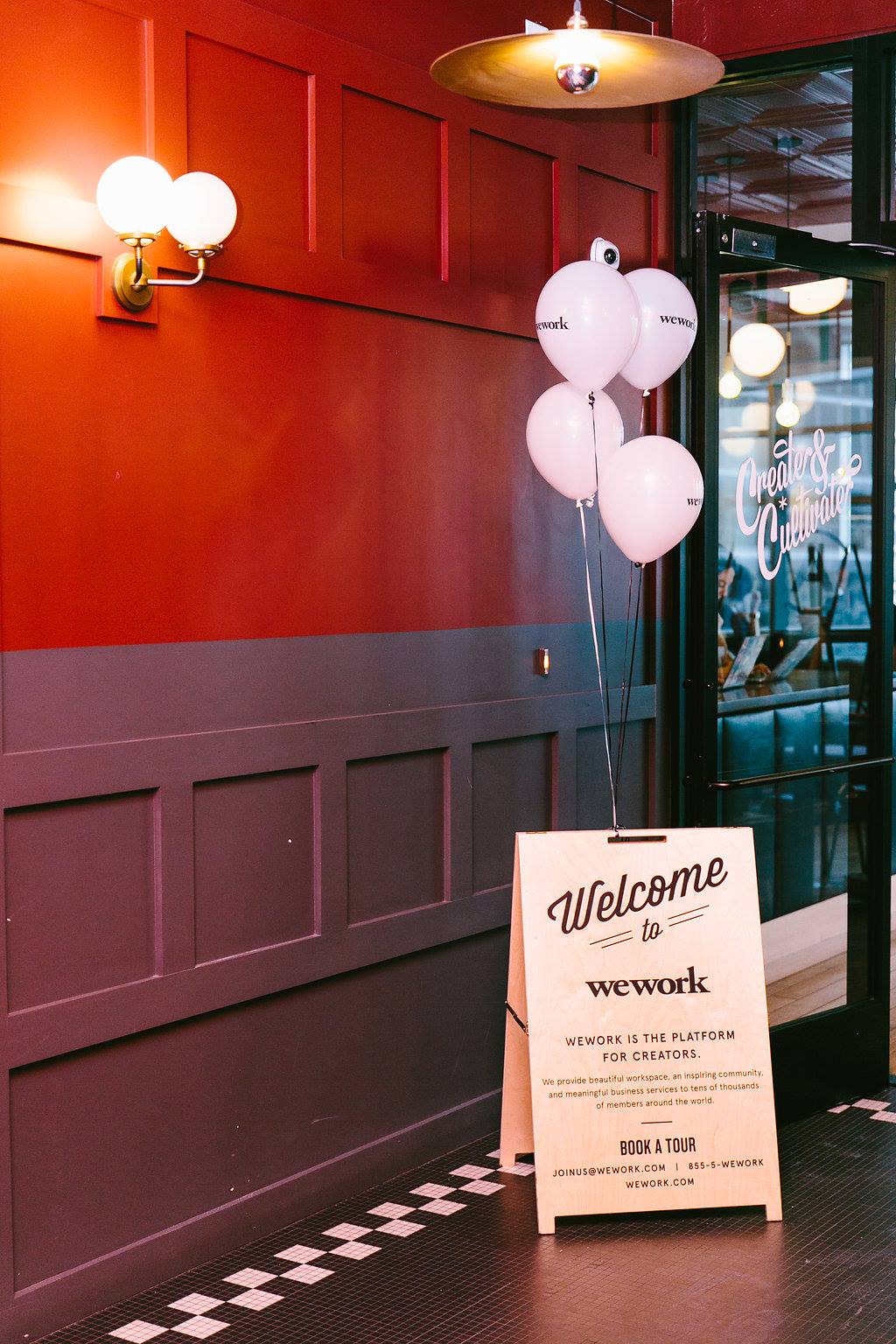



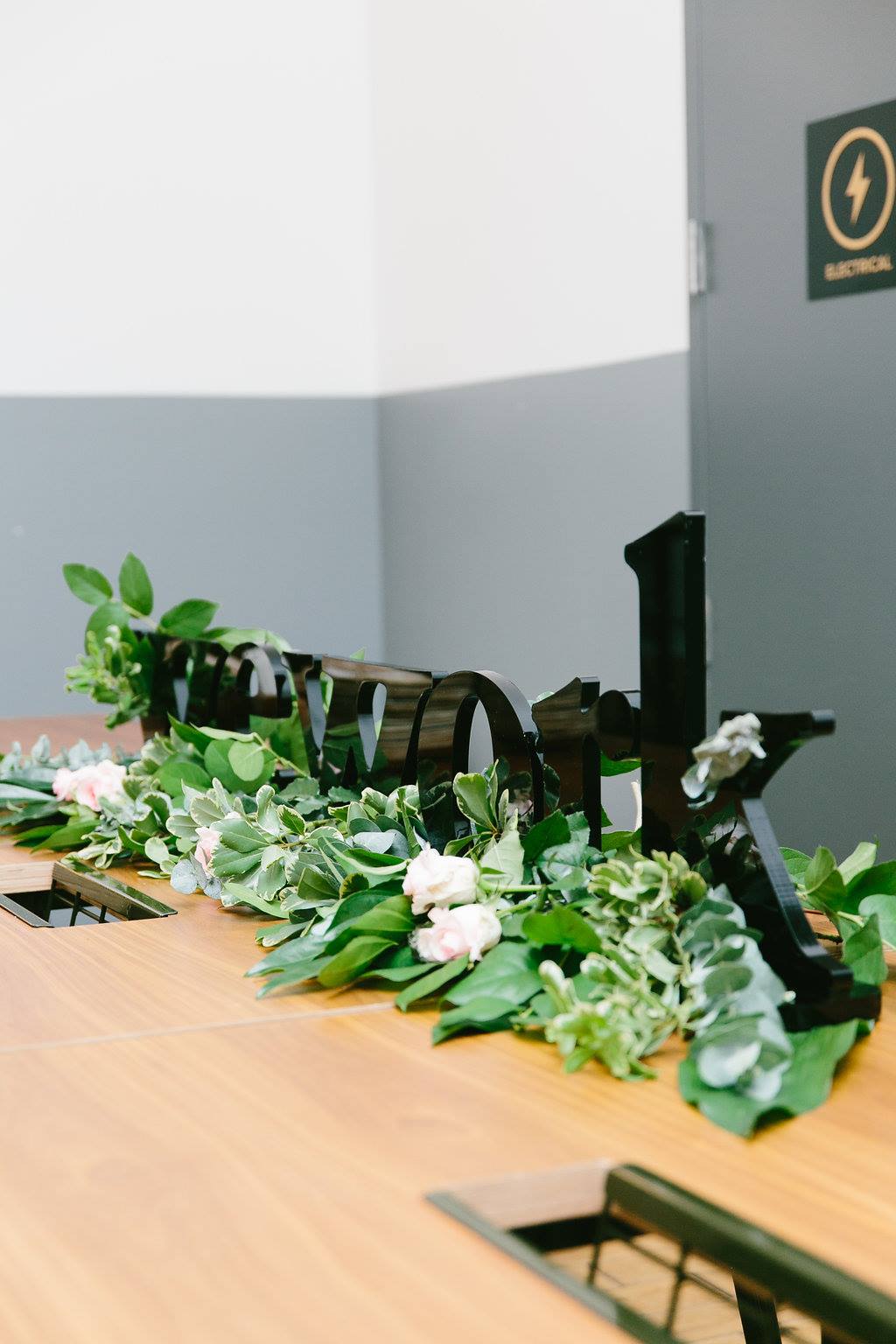

You’re Running Out of Space—Literally
Maybe you started your business from your home. Some of the biggest corporations, including Google and Amazon, started in someone’s garage, and look at them now. If you’ve reached a point where you’re no longer flying solo, it may be time to scope out your nearest WeWork location. There are different plans to choose from that can better fit the needs of you and your employees. They’re also a lot more affordable than building out your own space. You can check out pricing and membership options here.
You Love Collaboration
Moving into a co-working space means you’ll have access to hundreds of go-getters like you from across various industries. You can find potential business partners, form a brand partnership, or meet some great friends all in one space. WeWork thrives on providing its members with an open office environment that’s built for collaboration, teamwork, and lifelong relationships. A few other networking and collaboration opportunities that WeWork offers include office hours with investors and industry leaders, lunch-and-learn events where members share their knowledge and expertise, group meditations, and peer reviews.
Working Remotely Isn’t Your Jam
While working from home has been called the “millennial dream,” it’s not for everyone. Even if you’re on your own, WeWork provides the perfect space for a one-woman business. Rent a desk and it’s easy to get your business up and running. Yes, really. You’re also free to take meetings here once you’re building out a client roster or pitching yourself and your business to potential customers. It’s a great space to meet like-minded entrepreneurs and creatives.
Convenience
With over 268,000 members and 287 locations in 77 cities worldwide, there’s bound to be a WeWork location that is accessible to you. In C&C’s base of Los Angeles, there are 19 WeWork buildings alone. Check out the location listings to see if there’s a WeWork location near you.
Looking for a co-working space? Well, you’re in luck! We’re partnering with our business BFFs over at WeWork to giveaway two complimentary hot desks at WeWorks around the country! Enter your info below to enter for a change to win:
2 Hot Desks at a WeWork in your local WeWork: Guaranteed workspace in a common area at one location. Just bring your laptop, pick an open seat, and get to work.
Included in your Hot Desk Membership, you'll also gain access to the WeWork Member Network is a digital platform available on iOS, Android, and web that enables you to connect with other members and interact with your space.
Check out the terms & conditions here.
THIS GIVEAWAY IS NOW CLOSED. WINNERS WILL BE CONTACTED VIA THE CONTACT INFORMATION PROVIDED!
MORE FROM OUR BLOG
How to Dress Like a Boss at Work This Fall
Business in the front and back.
With today’s office environments featuring a wide range of dress codes from suited up to business casual, selecting an outfit for work each morning can be downright stressful! You want to ensure you look professional but you also want to be able to add your own personal style to your work look—it doesn’t have to be as difficult as it sounds.
JCPenney offers an array of stylish career wear, with on-trend fashions for women of every shape and size, and for jobs of every kind. And if you find yourself heading out to a lot of evening events when the workday is over, JCPenney has you covered with day-to-night pieces to take the stress of switching outfits away.
JCPenney recently joined Create & Cultivate at our Chicago conference, where the retailer showcased trend-forward looks to our attendees from its collection of private brands including Liz Claiborne, Worthington, a.n.a. and Boutique+.
To bring this fashion inspiration to all our readers, we’ve teamed up with the JCPenney once again – this time to share five key looks to take with you to the office this fall. From bold colors, fashion jackets, wide leg pants and even menswear as well as athleisure inspired looks, these trends will work however—and wherever—you work:
Bold Color
Ditch the traditional pantsuit and add a vibrant hue to your closet. Pair a bold power pantsuit with a classic pair of black pumps and strut with confidence as you head to your desk.
The Fashion Jacket
For a casual, yet polished look, pair a patterned blazer with your favorite jeans and add kitten heels into the mix to complete the look.
Menswear
If you’re the type to experiment with your looks, try mixing and matching patterns, texture and color. Menswear-inspired textiles take on a whole new look when mixed with feminine details like a floral or animal-print blouse.
Don’t forget to complete your boss work look with a visit to Sephora inside JCPenney and the Salon by InStyle.
For more stylish work staples, head over to JCPenney.com and shop your favorites. What’s your go-to office look for fall? Let us know in the comments below!
MORE FROM OUR BLOG
How One Brand is Making the Fashion Industry More Inclusive
Making a statement one look at a time.
From the clothing, to hair and makeup, and all the way to the venue, fashion week is all about pushing boundaries. Yes, people are wondering if top models will be gracing the runway, and if they can get their photos snapped by street style photographers, but fashion week has a much deeper meaning now. For years, the fashion industry has been called out on not being diverse enough and not promoting enough inclusivity throughout the media and campaigns, and especially at fashion shows. Whether it’s editors of color who’ve shared that street style photographers ignore their looks on the street, or models who’ve stated they haven’t been cast based solely on the color of their skin, voices are louder than ever. The LGBTQ+ community doesn’t get much love as fashion month takes off, especially on the catwalk, but now change is coming for that too.
DapperQ’s catwalk is defying the stereotype of what a model “should” look like with models from all walks of the LGBTQ+ community to showcase their gender non-conforming pieces.
Founded by Anita Dolce Vita, dapperQ’s theme this NYFW was ‘dress code’, with the goal of unifying 10 designers whose intention was to strip the gender conformity associated with fashion, in their words, ‘queering’ it and exhibiting the talents of LGBTQ+ designers.
The theme was there to challenge designers to decode clothing and to take down stereotypes that are associated with certain garments. More than 65 models strutted their stuff on the catwalk at the Brooklyn Museum this year, contributing to what Dolce Vita calls the “queer fashion revolution, one of the most stylish forms of protest of our generation.” The models were all-encompassing in terms of race, gender, sexuality, and body type and featured athleisure, suiting, intimates and more, making it the most inclusive NYFW show to date.
For the fifth year in a row, dapperQ broke down the barriers and stereotypes in the fashion and LGBTQ+ communities alike. Dolce Vita shines a rainbow lens onto a world that leans so thin and white when it comes to both designers and models for her shows. Can we get an amen?
DapperQ is the premier queer style and empowerment website specifically for masculine presenting women and trans-identified individuals. Dubbed GQ for the “unconventionally masculine,” dapperQ was among the first digital spaces to champion “menswear” for those traditionally under-served by mainstream menswear media and designers.
MORE FROM OUR BLOG
Everything You Missed at Our Roxy Pop-Up
It was a night for the books.
Last night we took over LA's Fig House for a night to remember with our friends at Roxy. The brand stopped in SoCal for their Make Waves, Move Mountains tour and brought some of their athletes along for the night, plus an IRL shop. If you were in our audience, you witnessed us make waves and move mountains with our amazing roster of panelists, and Roxy pop-up shop. As always, the space was filled with a ton of Instagrammable moments to snap away. Our guests also mixed and mingled with cocktails, light bites, and left with long-standing connections to build their network. If you weren't able to make it, don't worry we've got a full recap for you.
The Panelists
Lisa Andersen: Four-time world surfing champion, all around badass. Lisa was named one of the top female athletes of the century by Sports Illustrated and was inducted into the Surfing Hall of Fame. Today, she is the worldwide ambassador for Roxy and has her own collection with the brand.
Bruna Schmitz: This professional surfer left her native Brazil at a very young age once she realized she could make a career out of the sport. Bruna became the youngest to win a Brazilian pro event, and at the age of 14, she signed with Roxy.
Deddeh Howard: Founder of the Black Mirror project and all-around influencer. Deddeh wanted to challenge the modeling industry after facing rejection, and understanding the lack of diversity. The Black Mirror Project started by recreating big campaigns with models of color, and it went entirely viral. Deddeh wants all women to be represented in all industries.
Katie Austin: You likely know her as a wellness expert, but Katie now has her own activewear line, Austin Active, and an app that's inspiring women to live their healthiest lives. As the daughter of fitness guru, Denise Austin, Katie naturally stepped into the wellness space and has garnered an audience of her own.
Jordan Younger: AKA the Balanced Blonde, runs a successful blog, podcast, and is also a published author. She's been open about her struggles with an eating disorder and pushing through it to create the best life for her. She now serves as an inspiration for other women who are looking to understand wellness and practice self-care on the regular.
Mic-Drop Moments




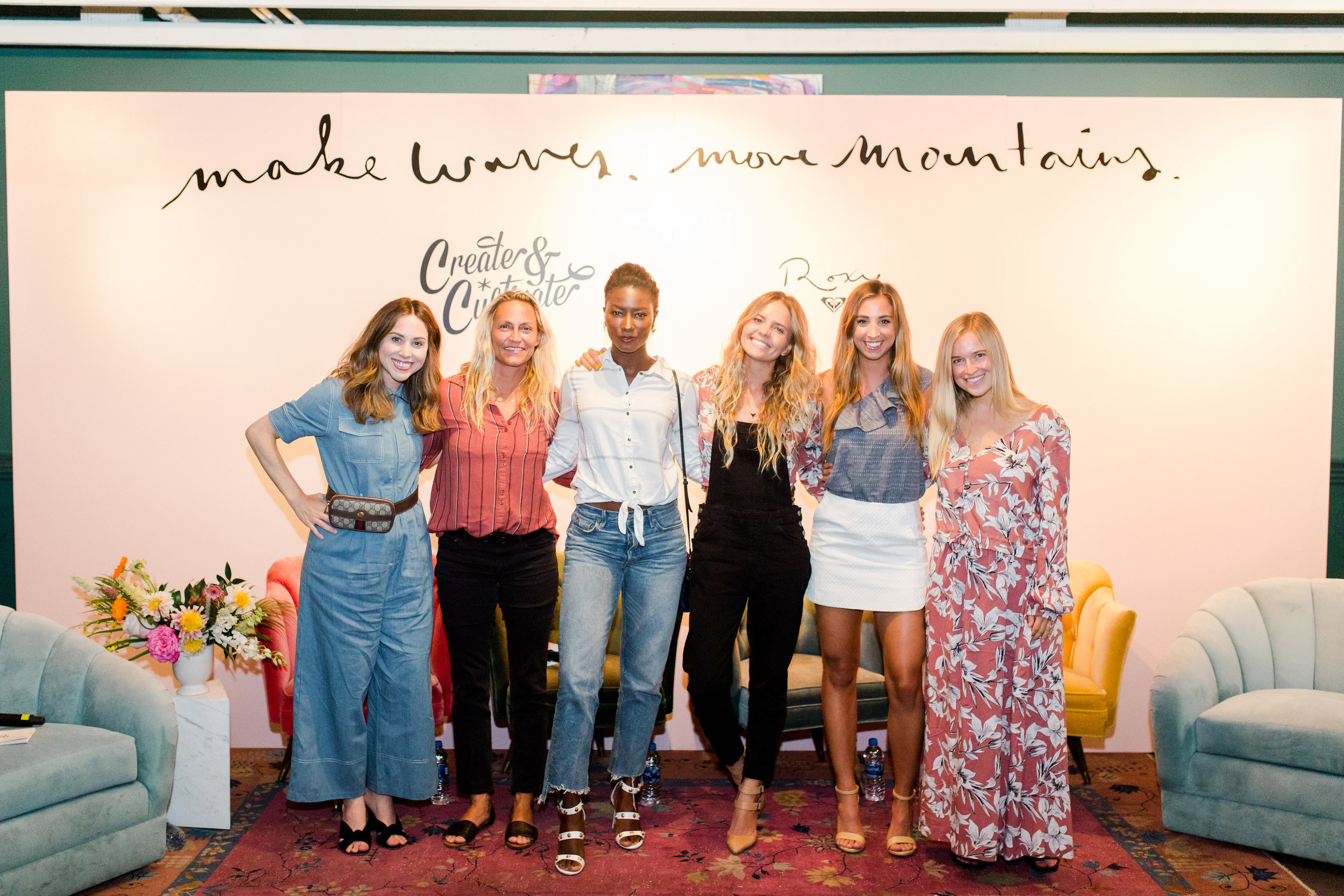


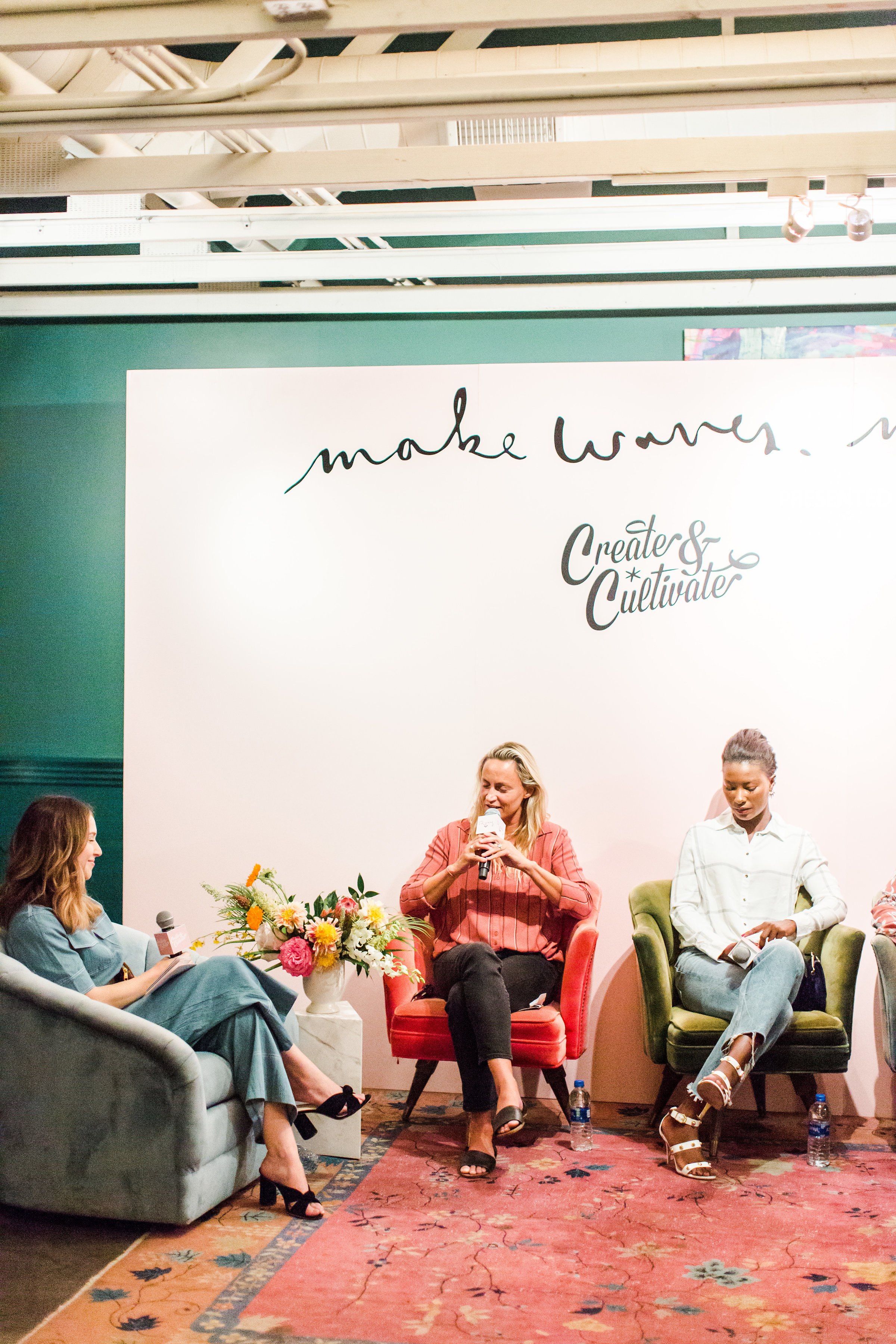

“Once you get the fear out of the way, you’ll be able to achieve your dreams.”- Deddeh Howard
“If you can walk away from certain facets of your business, it’s not a failure.”- Jordan Younger
“I always tried to keep an open mind and understand why my life was going in the direction it was going.”- Bruna Schmitz
“I took all of my savings and put it into a clothing line & app in college and they failed. But looking back now, I know that HAD to happen.”- Katie Austin
The Space
We transformed the Fig House into a Roxy-lover's dream. There was an airstream on site, where guests can handpick Roxy clothing items as well as accessories. For the surfing fans, there was a trio of boards set up to take all the Instagram photos you can imagine. During the panel we had the audience sit in the main section of the venue, while they enjoyed cocktails, wine, beer, and light bites. Everyone also received their own Roxy gift bag to store all of their new items from the pop-up shop, and custom illustrations by Chloe White were made upon request.
MORE FROM OUR BLOG
The Best Negotiation Tips We Learned at Our Chicago Conference
The Art of Negotiation panel, presented by LUNA spilled all.
Our Chicago conference was a day full of inspiration and career advice from women of all different walks of life. A big topic of the day was negotiation—you know, that one word that makes so many of us cringe. A surprising statistic that the audience learned was that only 30% of women are negotiating. Yes, you read that right.
During our Art of Negotiation panel, presented by LUNA, our speakers discussed the taboo topic both openly and honestly, which is the only way to move that conversation forward. The truth of the matter is that if women aren't freely discussing all things money, then negotiations aren't going to happen and the gender wage gap won't narrow or disappear once and for all.
Today also happens to be Women's Equality Day, so what better time to dish on money and negotiations? The year might be 2018, but the wage gap is prevalent and on our minds more than ever. Women earn 20% less than men do on average, for doing the same job with the same experience. Learning to negotiate and knowing your worth is the first step in closing the gap in order for women to be paid fairly and equally for their work and services.
Earlier this year, LUNA launched its 'Your Worth is Worth Negotiating' initiative to kick off the conversation that a lot of us tend to avoid, and the discussion continued during our conversation this past Saturday in CHI-town. Moderated by Maxie McCoy with an introduction by LUNA's Juliana French-Arnold, speakers Zoë Scharf, Reesa Lake, Blake Von D, and Robin Li fed our audience logic and real-talk advice on what it takes to negotiate effectively and confidently. Ahead are some of the biggest takeaways.
"Know your value, know your worth, and know what you can bring to the table."-Reesa Lake, Partner and Executive Vice President of Digital Brand Architects
Once women are self-aware of their value and worth, they're unstoppable. If you can confidently share your skills, experience, how you've contributed to your company, how you've helped it grow, what you plan on doing next, and more, then you can navigate successfully throughout a negotiation setting. If you don't think that you have what it takes, then that's what is setting you back.
"If my value was zero, you would not have come to me."-Blake Von D, Attorney & Influencer
Sometimes, you just have to lay down the law with anyone who's trying to offer you less than what you're worth. If they feel that you're worth much less than your value, then why should they attempt to work with you in the first place?
"Knowing what other people value companies that are similar to yours is very important."- Robin Li, Vice President of GGV Capital
This can pertain to small business owners, who are looking to market their product or service. On the other hand, this can also work for negotiating a salary and knowing what the standard salary for your field of work. You won't learn the proper value of what you're bringing to the table until you learn what others in the same area of work are valued as or are bringing home as income.
“Think about the potential you have to add and remember that you’re offering this person something that is really beneficial to them.”-Zoë Scharf, Co-founder of Greetabl
A negotiation is just as much about the other person than it is about you. Sure, you can know what you're worth, but they may need to be reminded that you're only here to help them. Have some facts ready about why your services will benefit this person and their business and help them grow even further.
“You have to be willing to hold off and say ‘no’ when you’re negotiating.”-Maxie McCoy, Writer & Public Speaker
A lot of us don't like using the word 'no', and that needs to stop today. Don't let anyone get away with taking advantage of you and your market value. It may be uncomfortable, but be prepared to walk away and reject a deal that doesn't benefit both parties or cater to your own needs.
"I'm not too expensive, you just can't afford me yet."-Blake Von D, Attorney & Influencer
This was the quote that caused a loud cheer from our audience! In the ultimate #facts moment of the panel, Blake said what a lot of us are thinking but never say to anyone on the other side of the table. It's true. If anyone thinks that you're charging too much when you clearly aren't, then they can't afford you. Point. Blank. Period.
Are you part of the 30% of women who negotiate? If so, let us know your own tactics for getting the deal you want. If not, what's stopping you?
MORE FROM OUR BLOG
